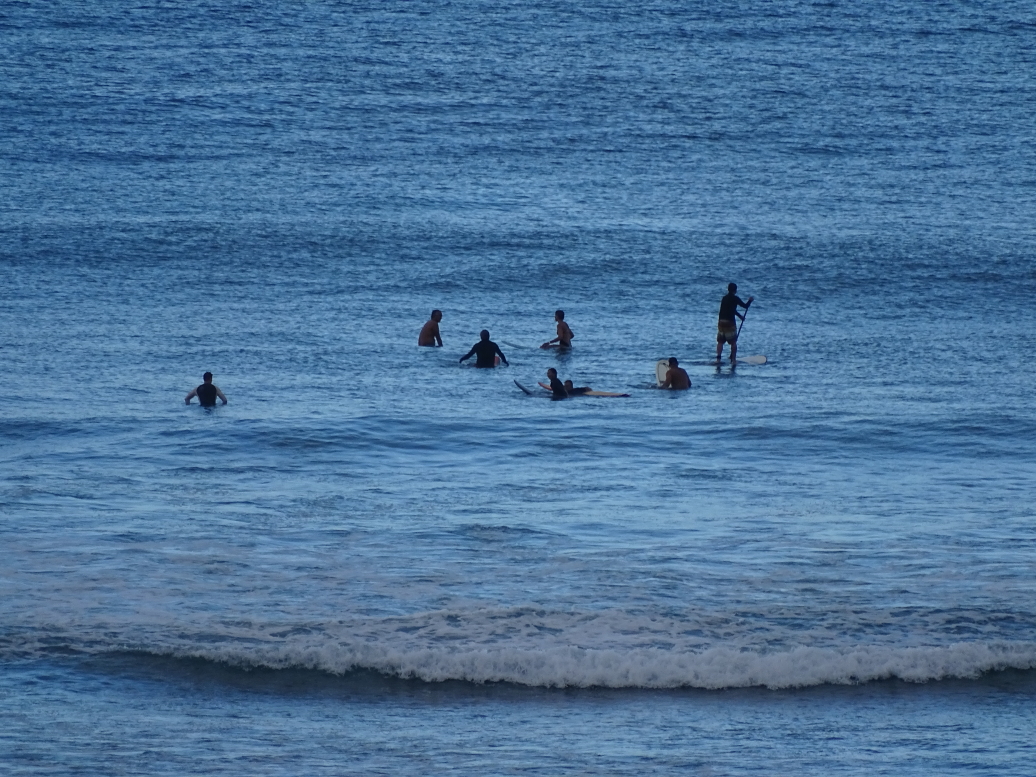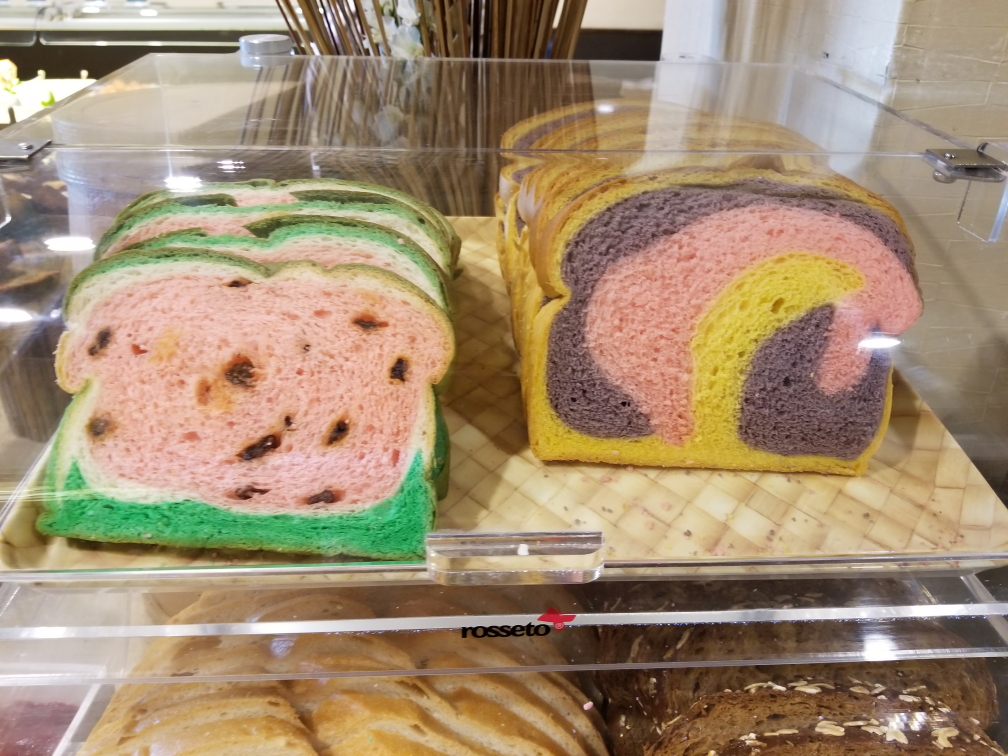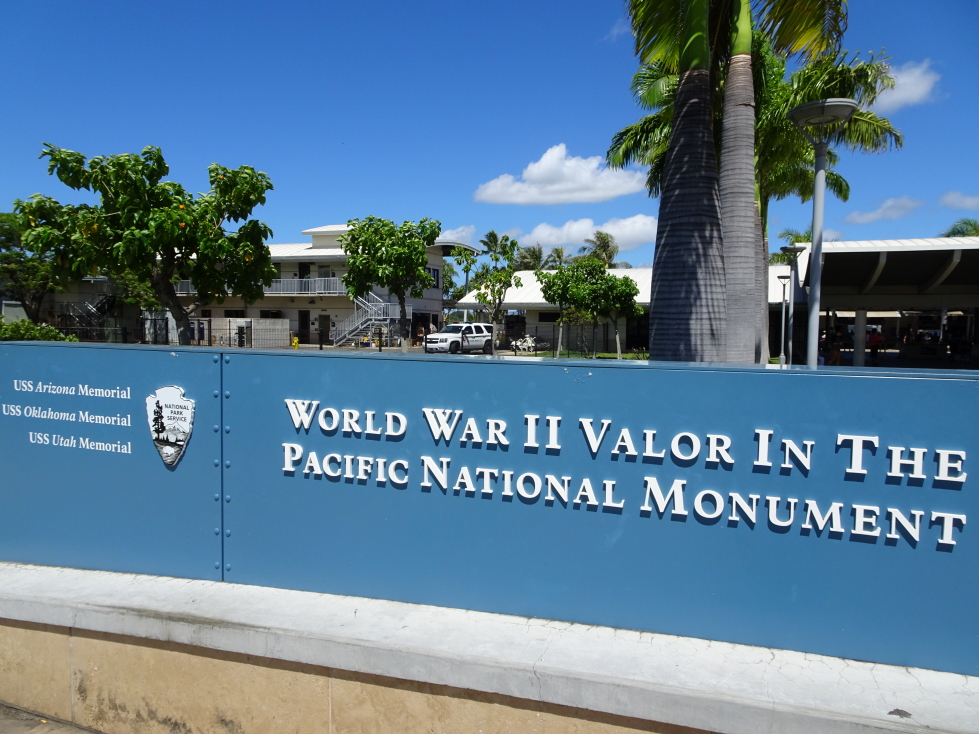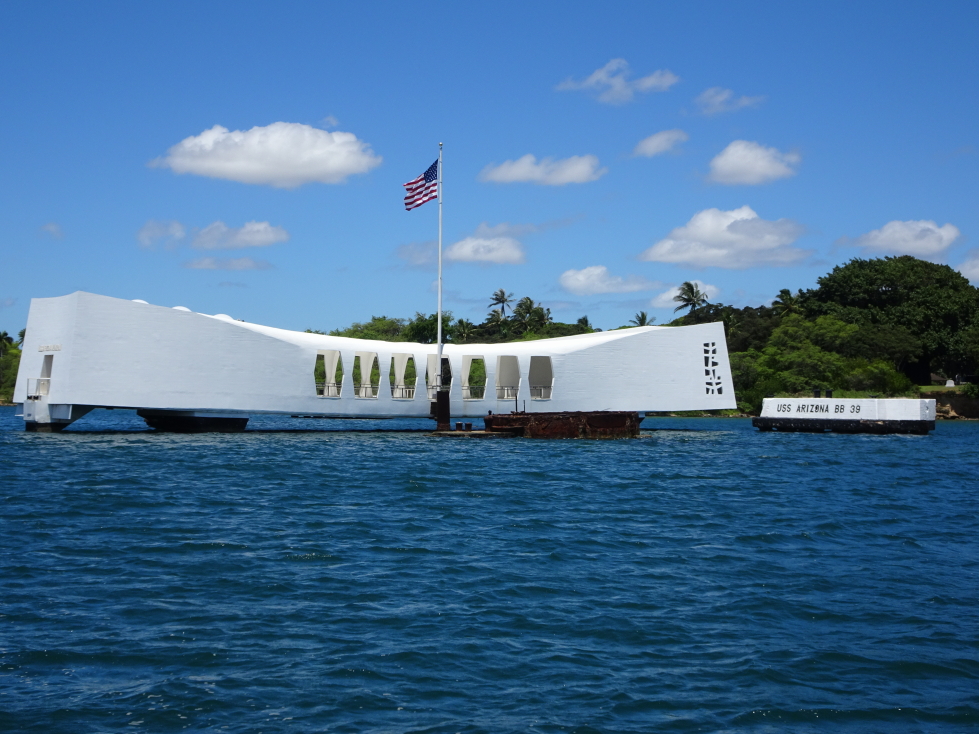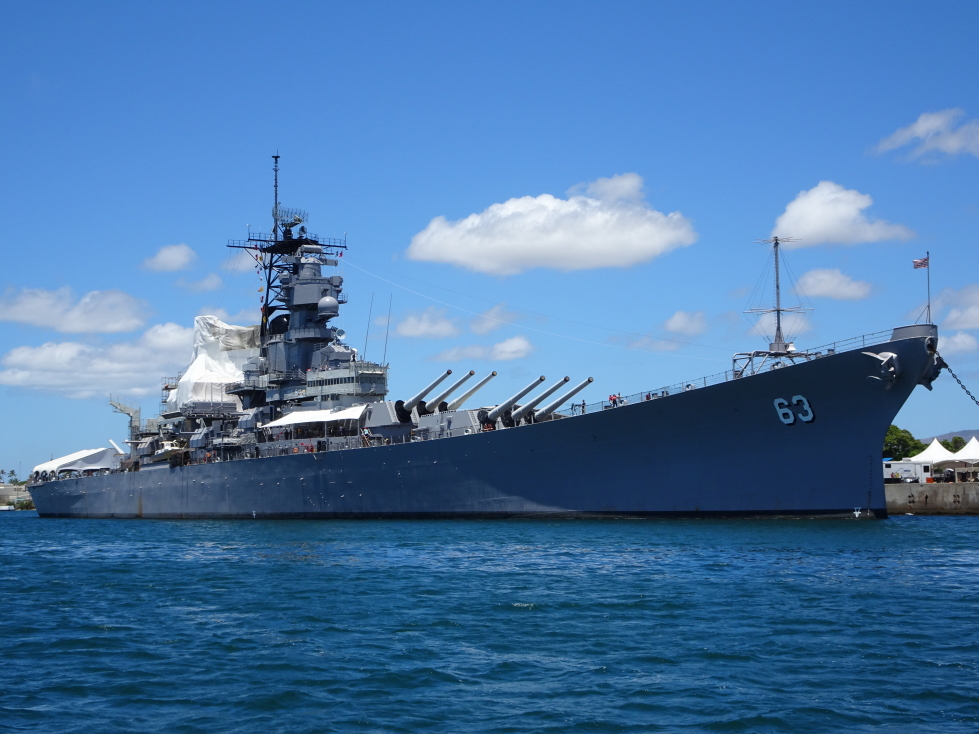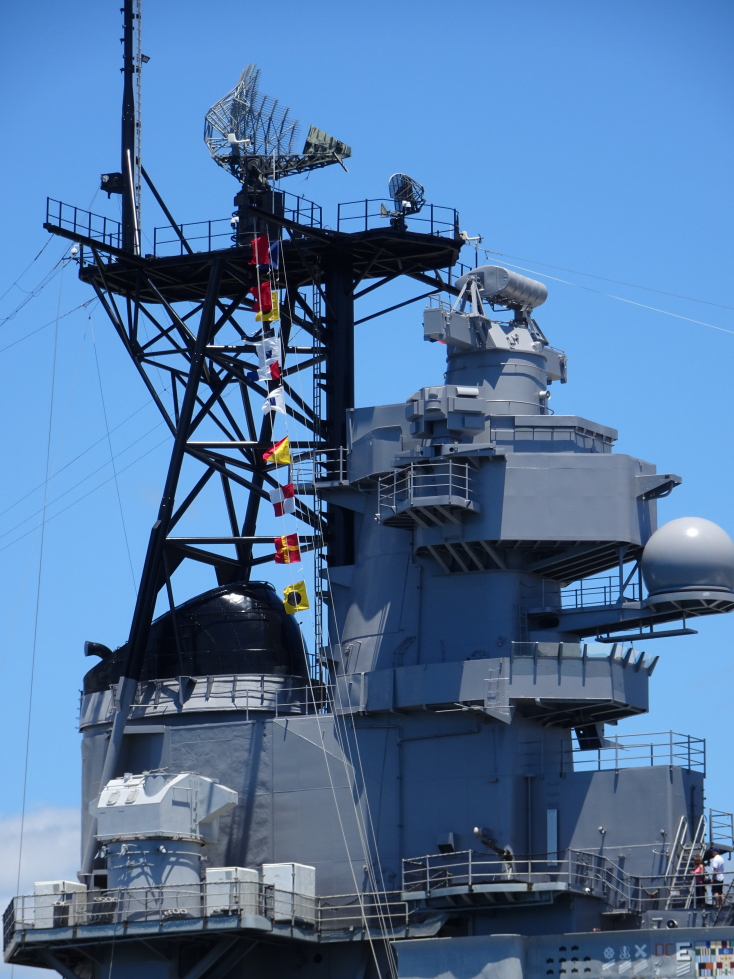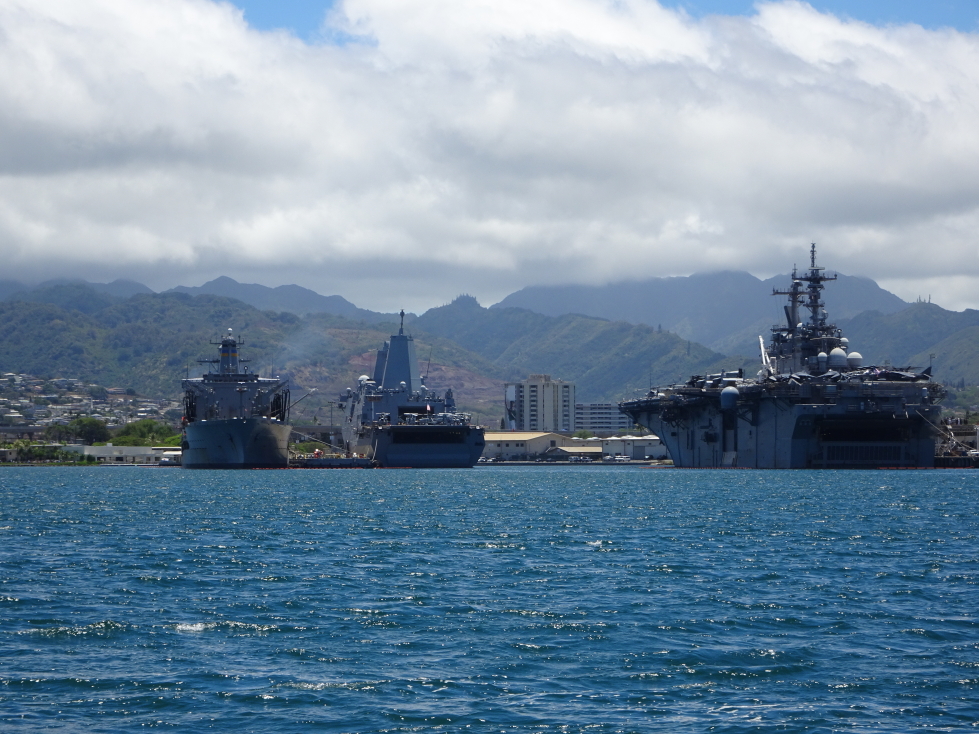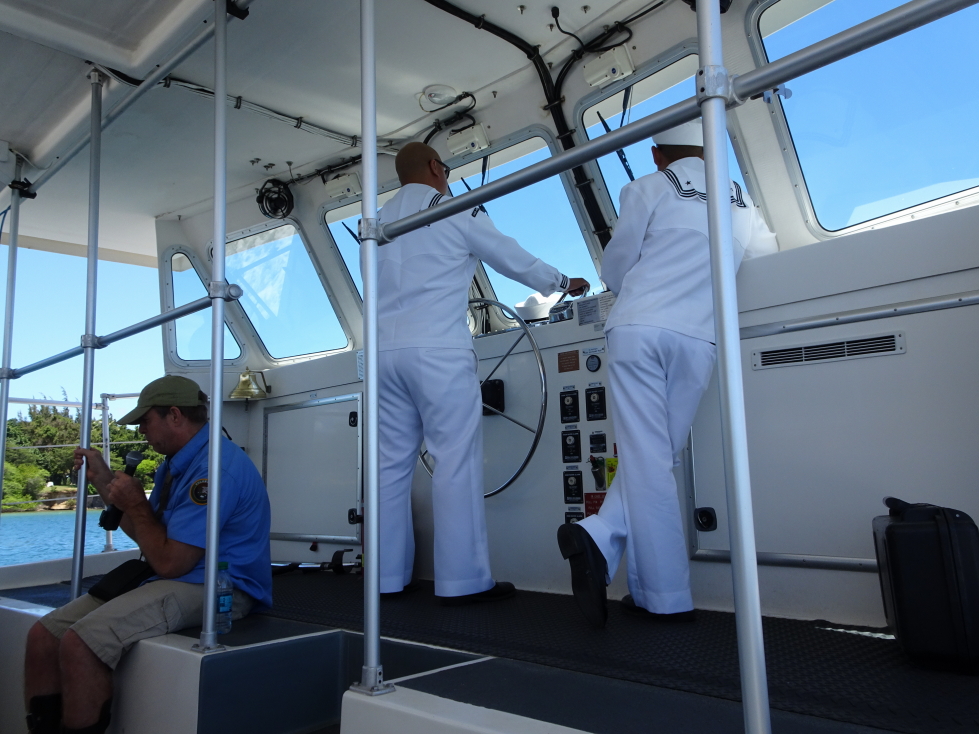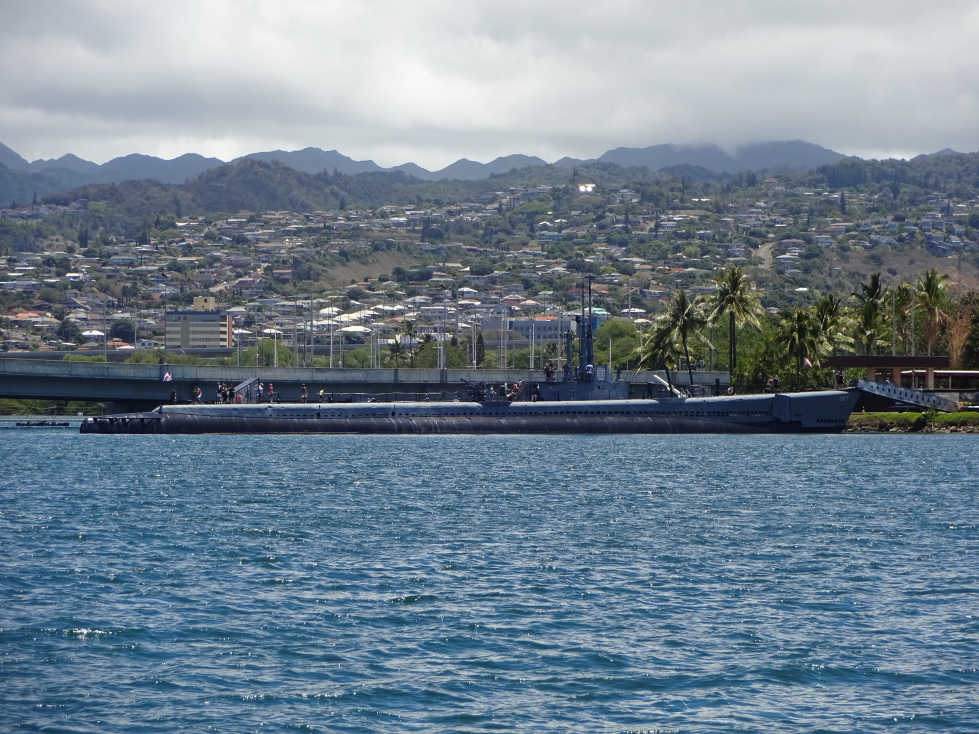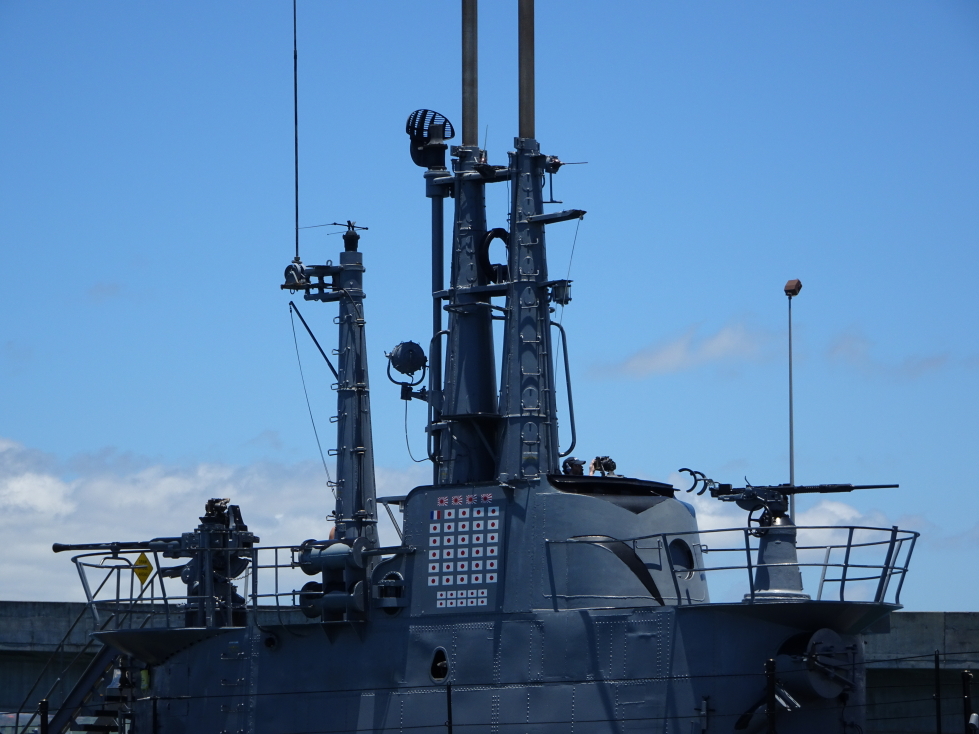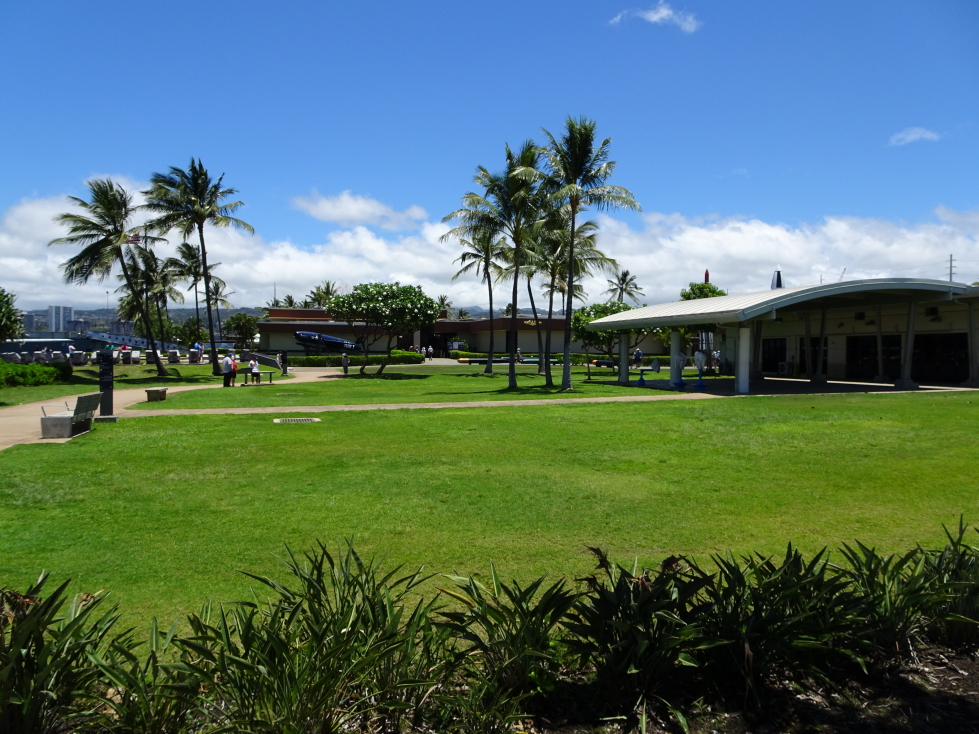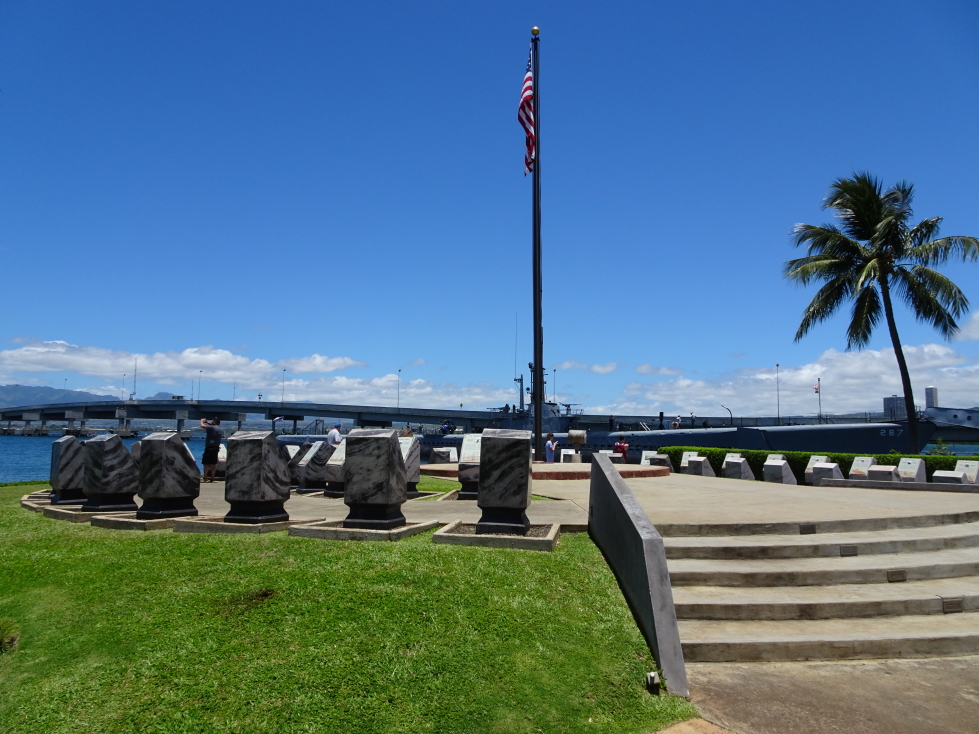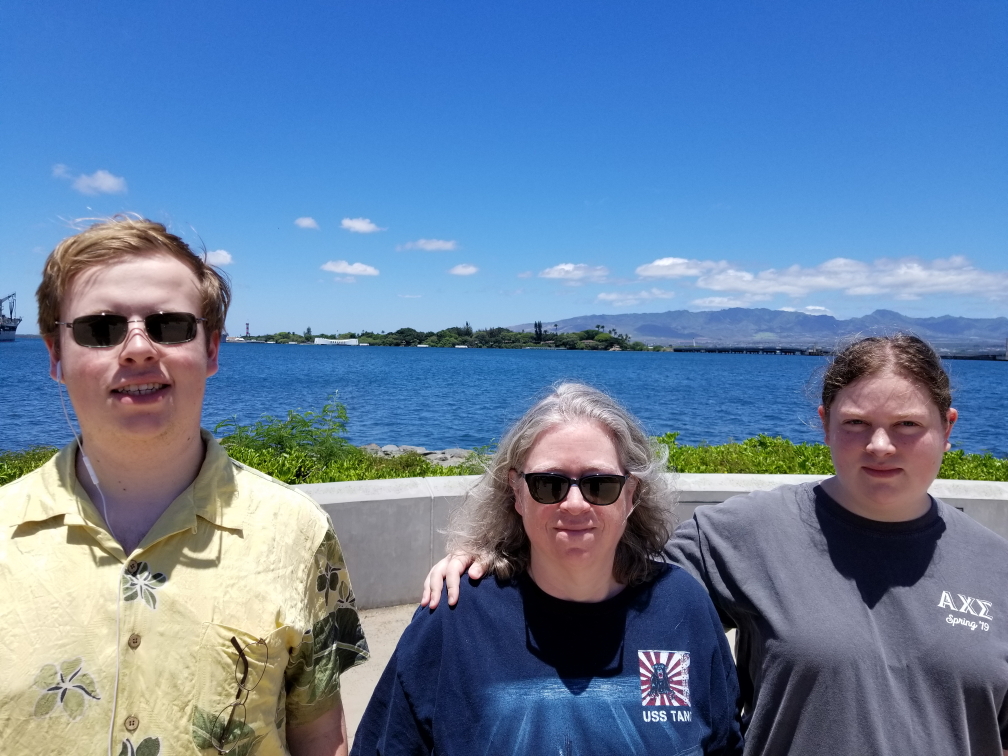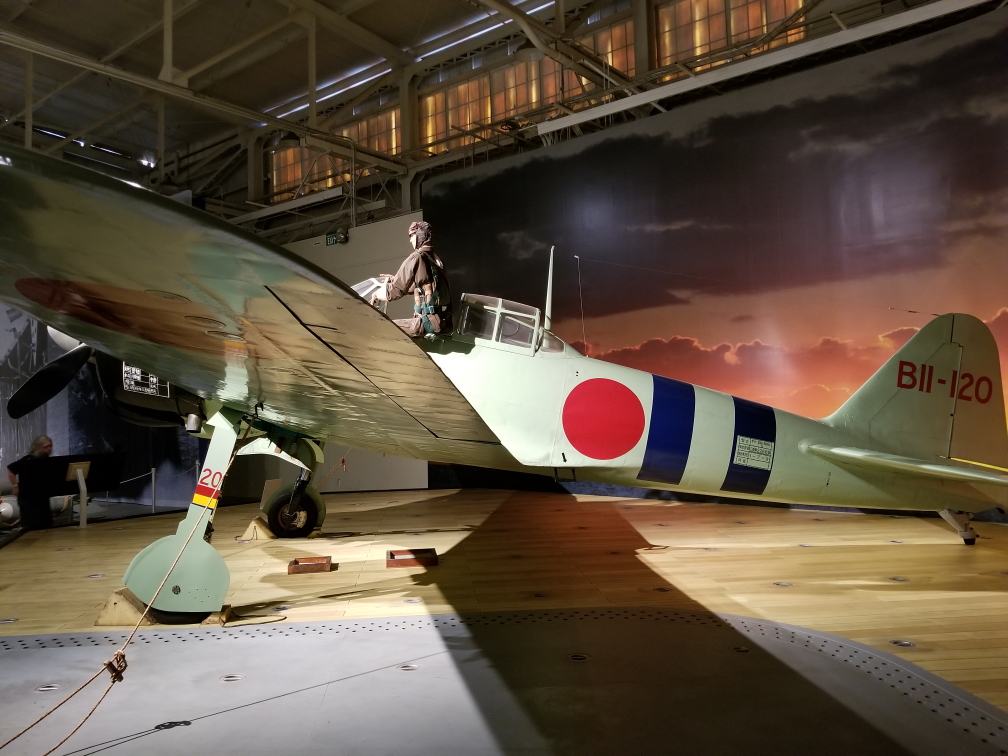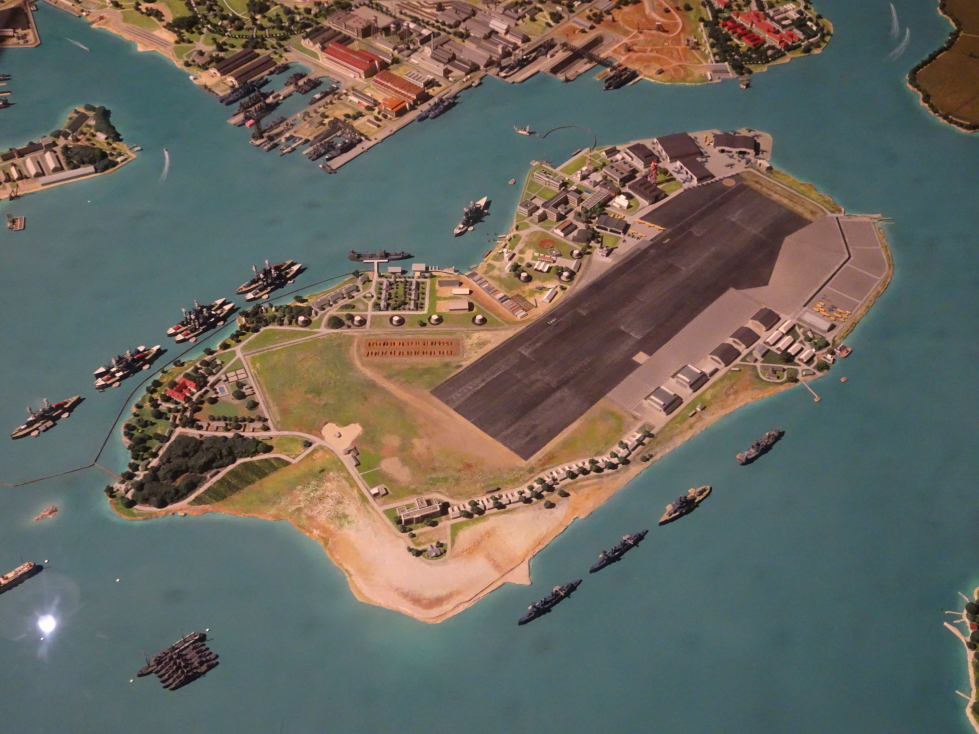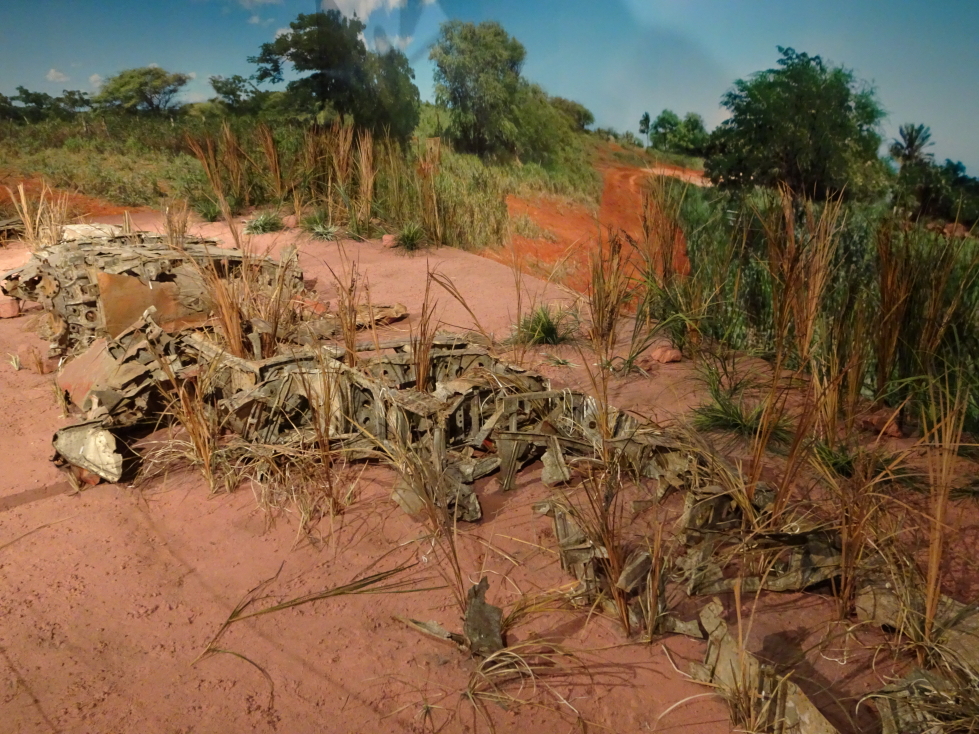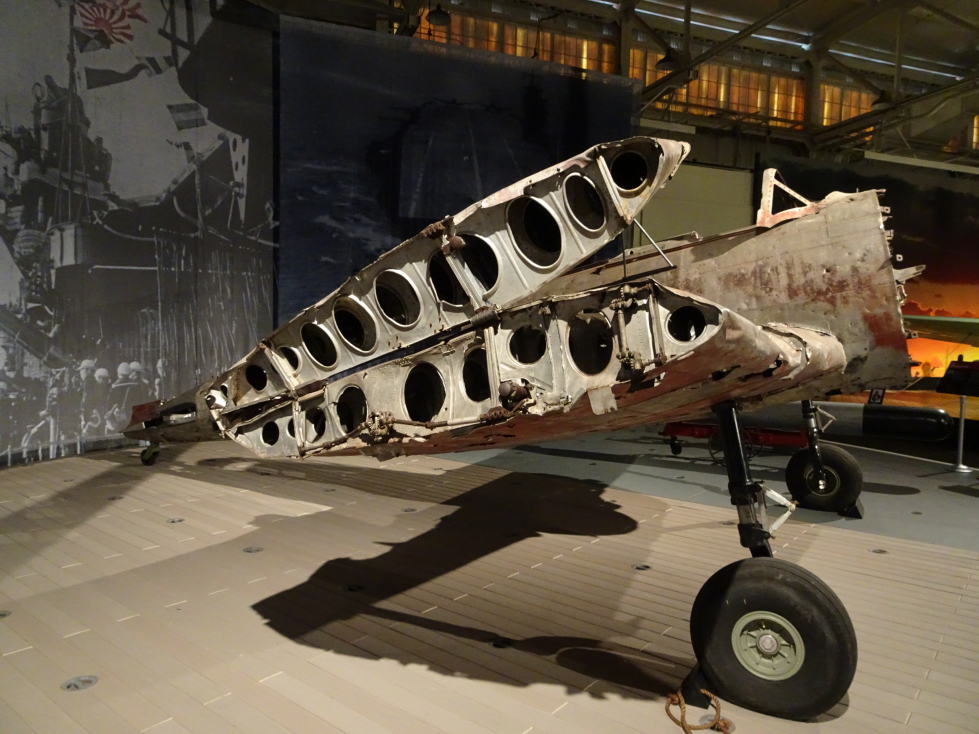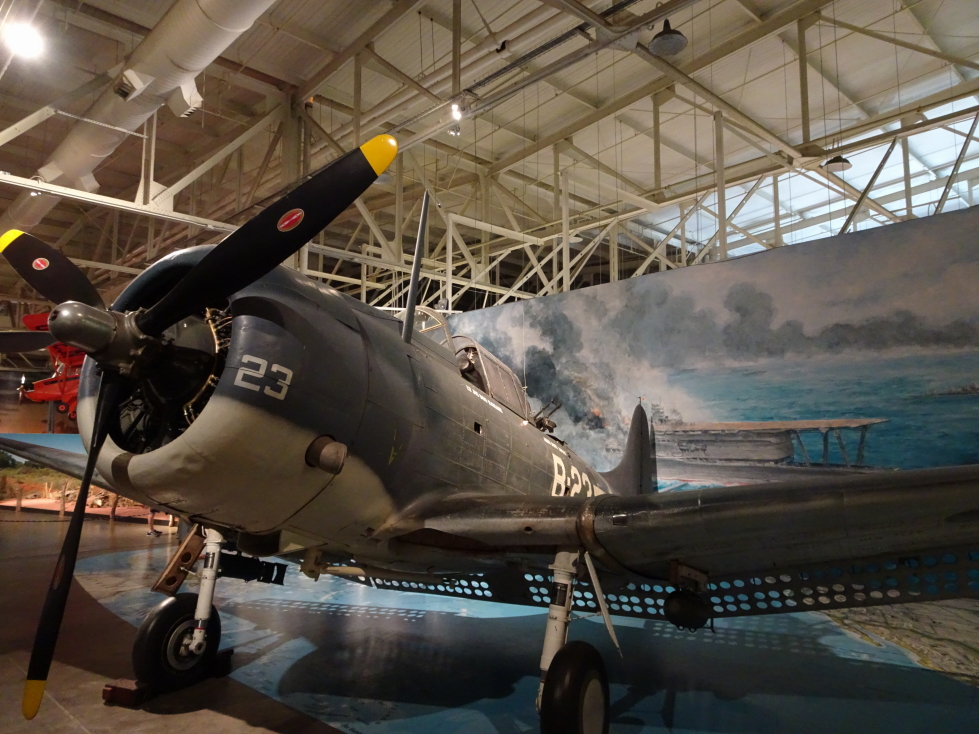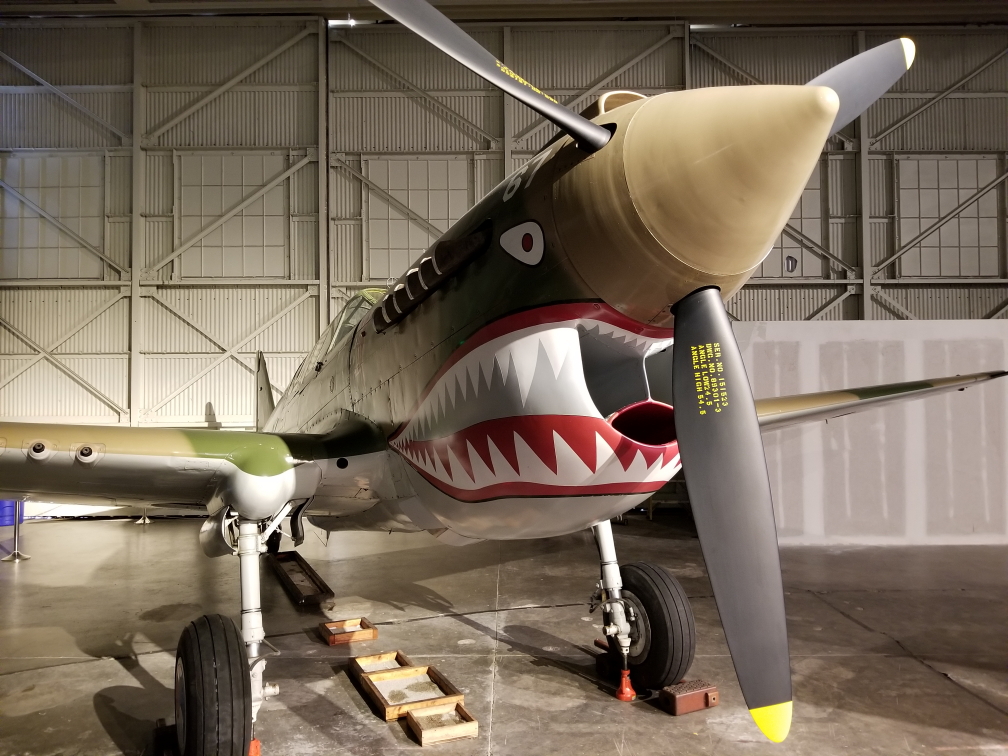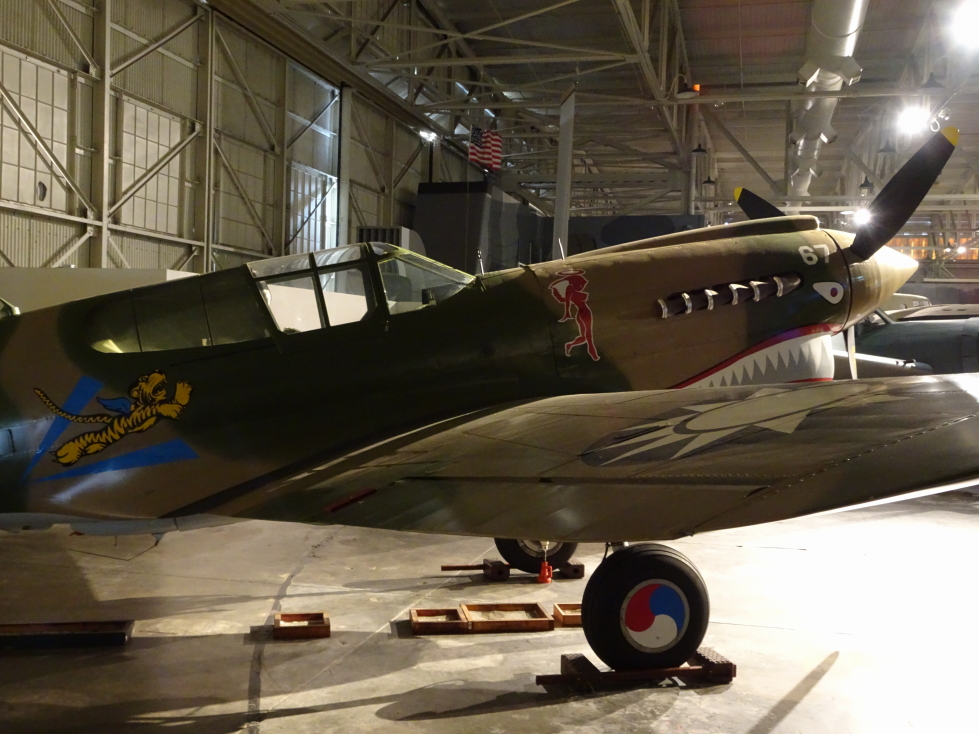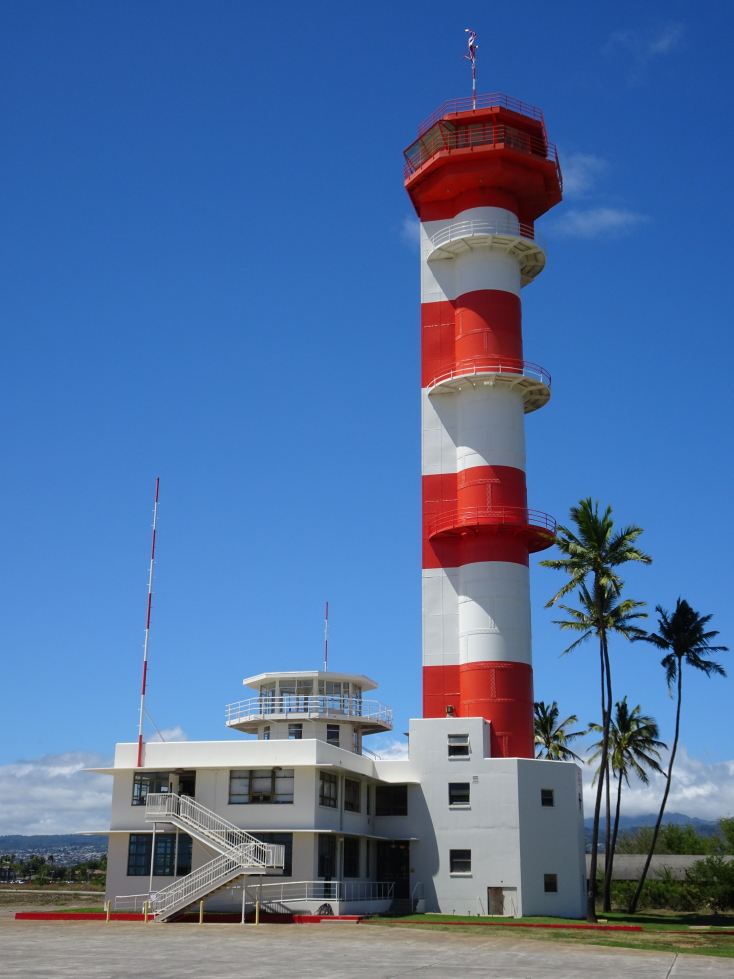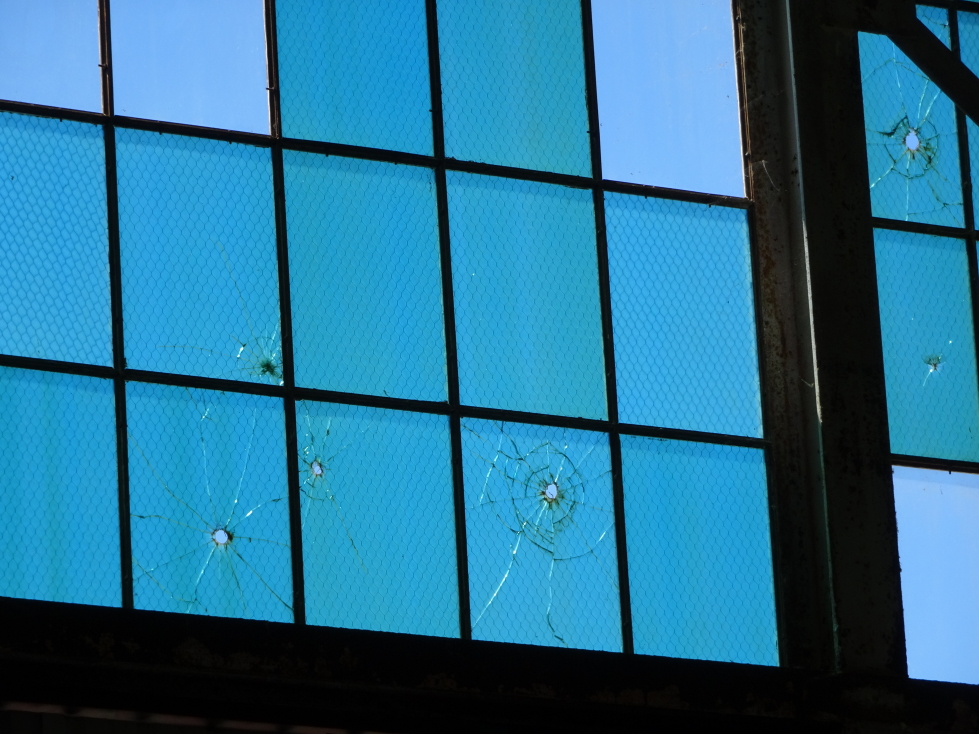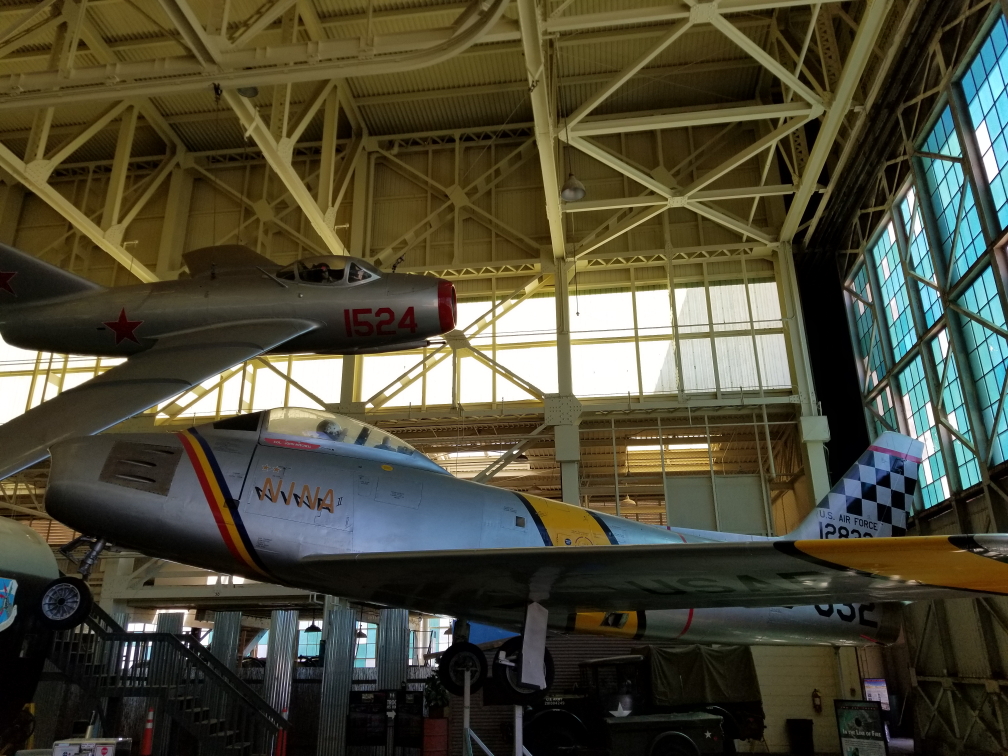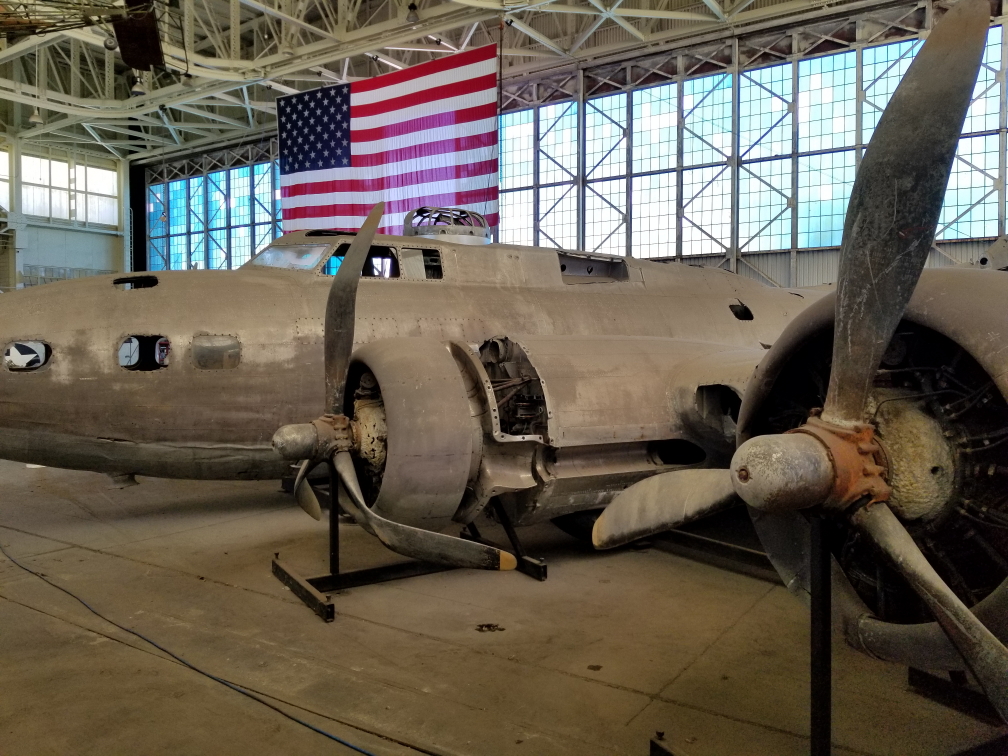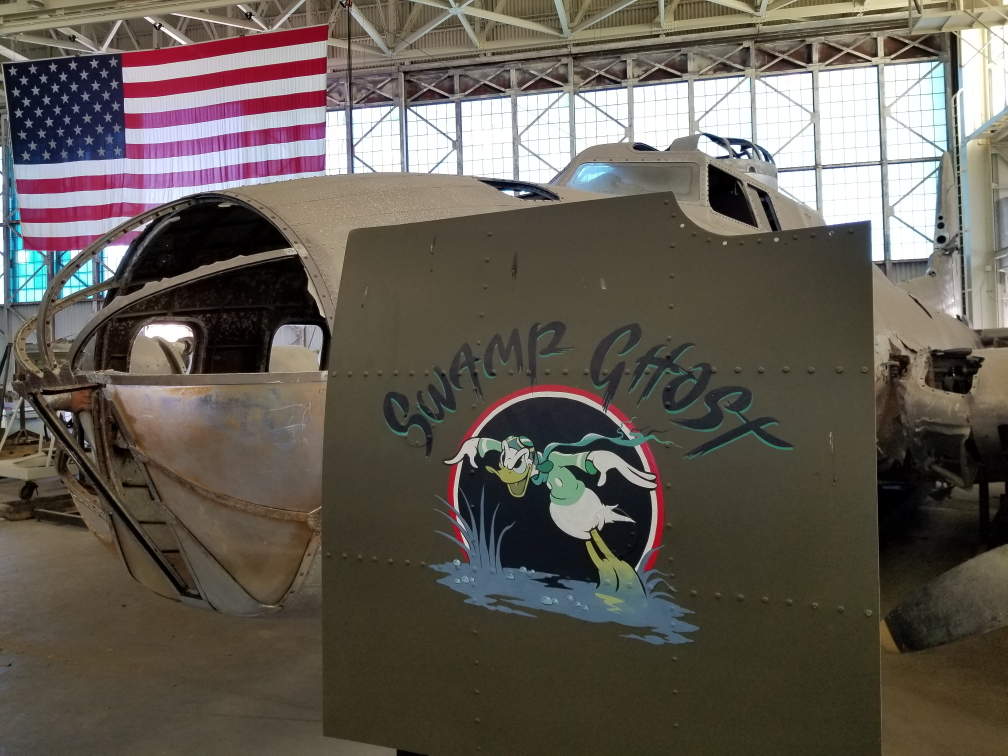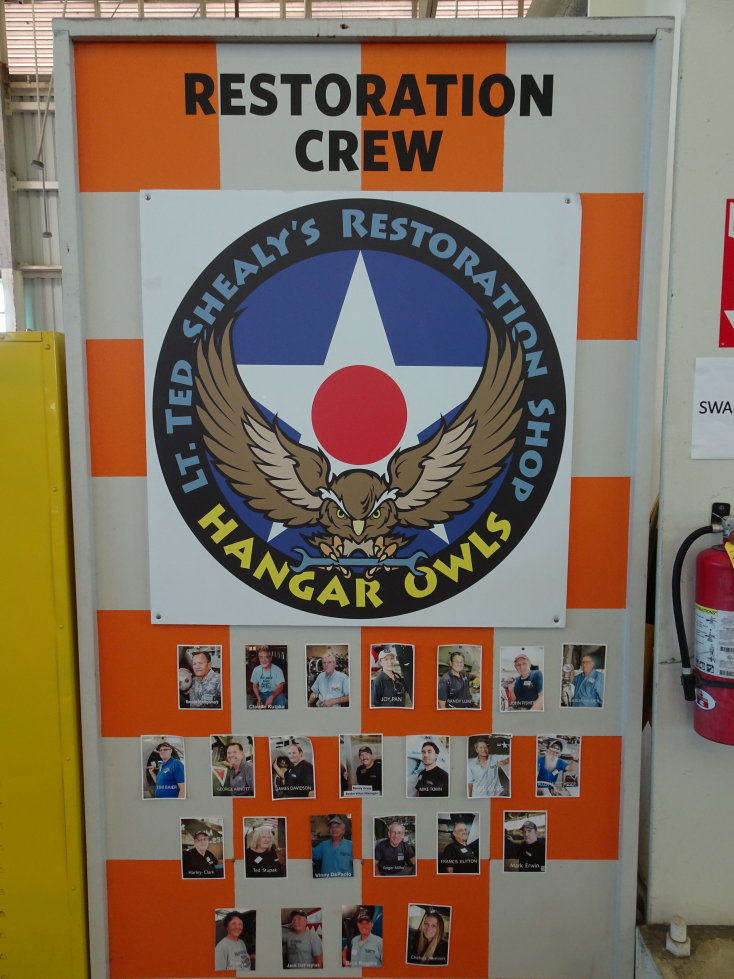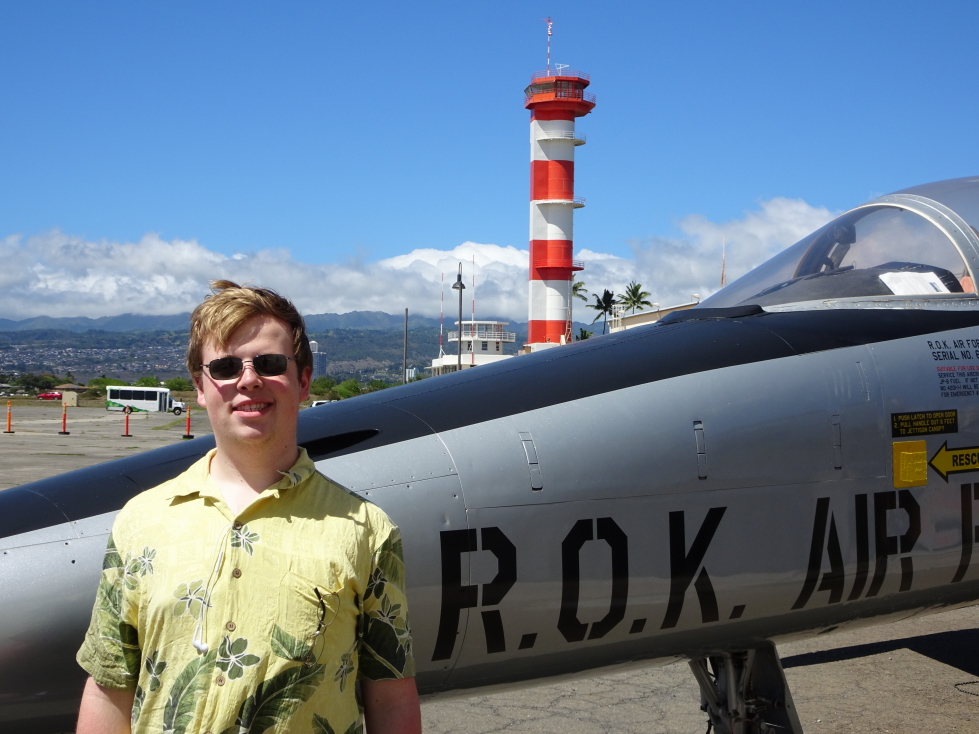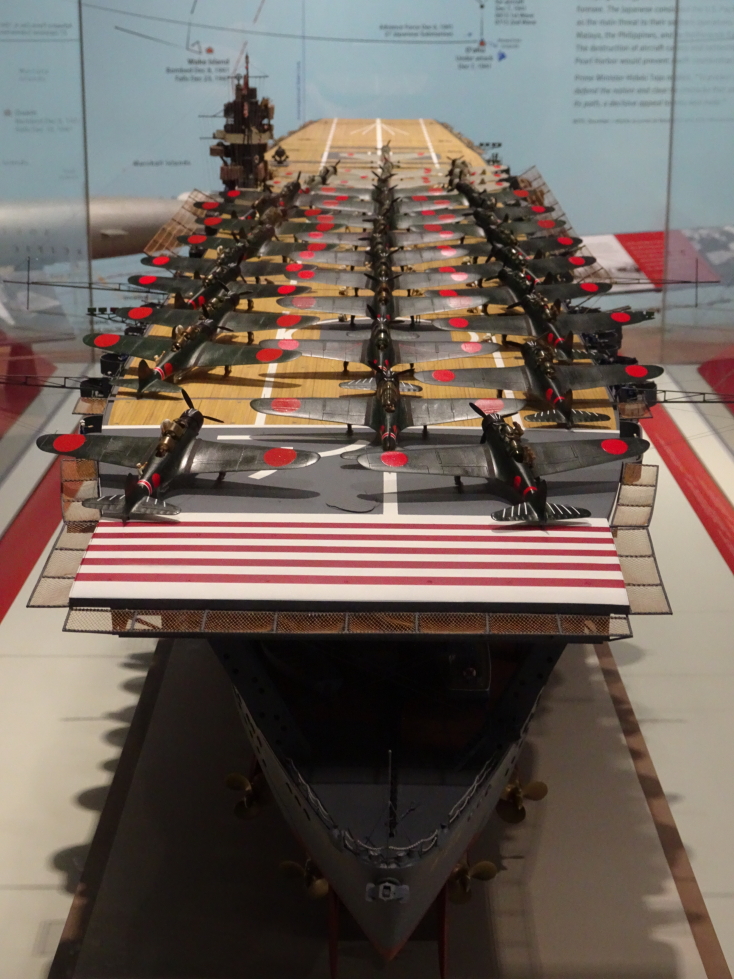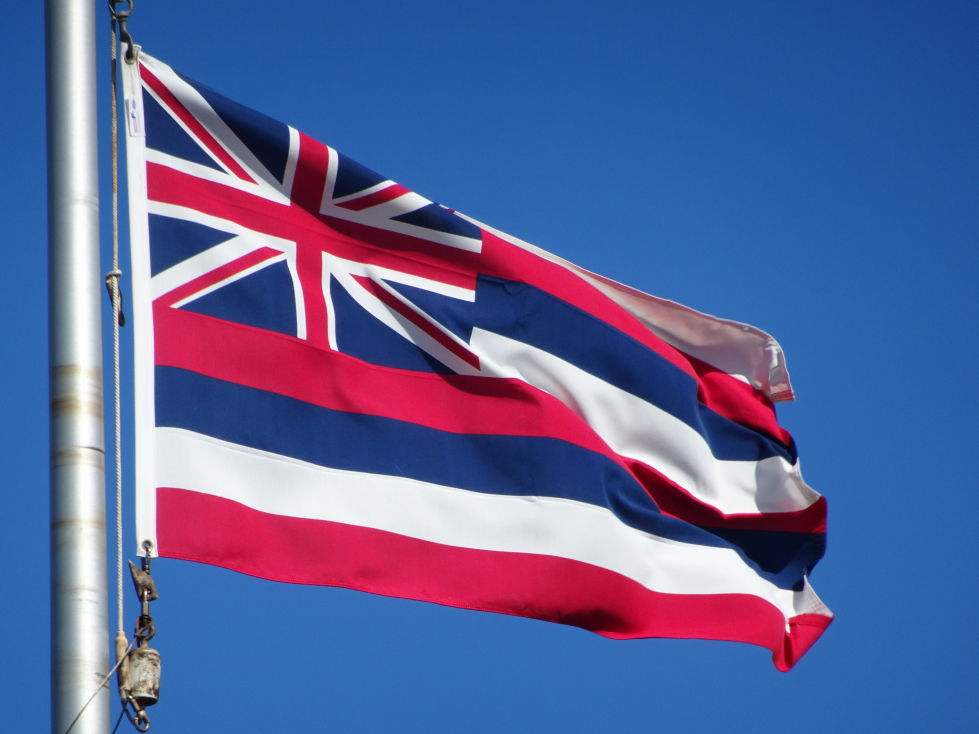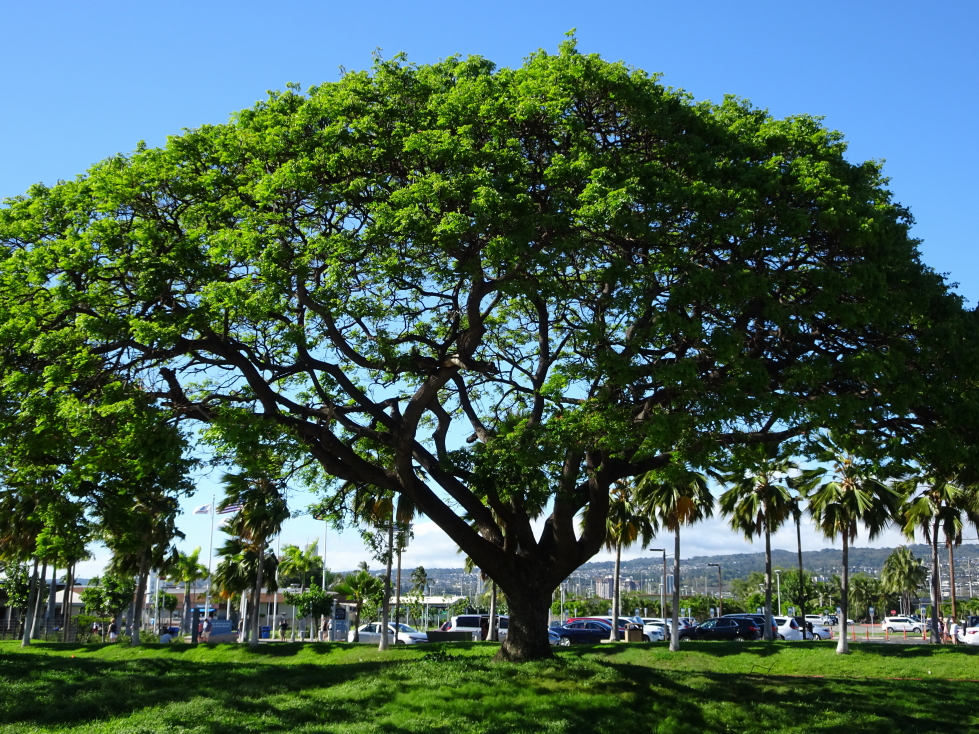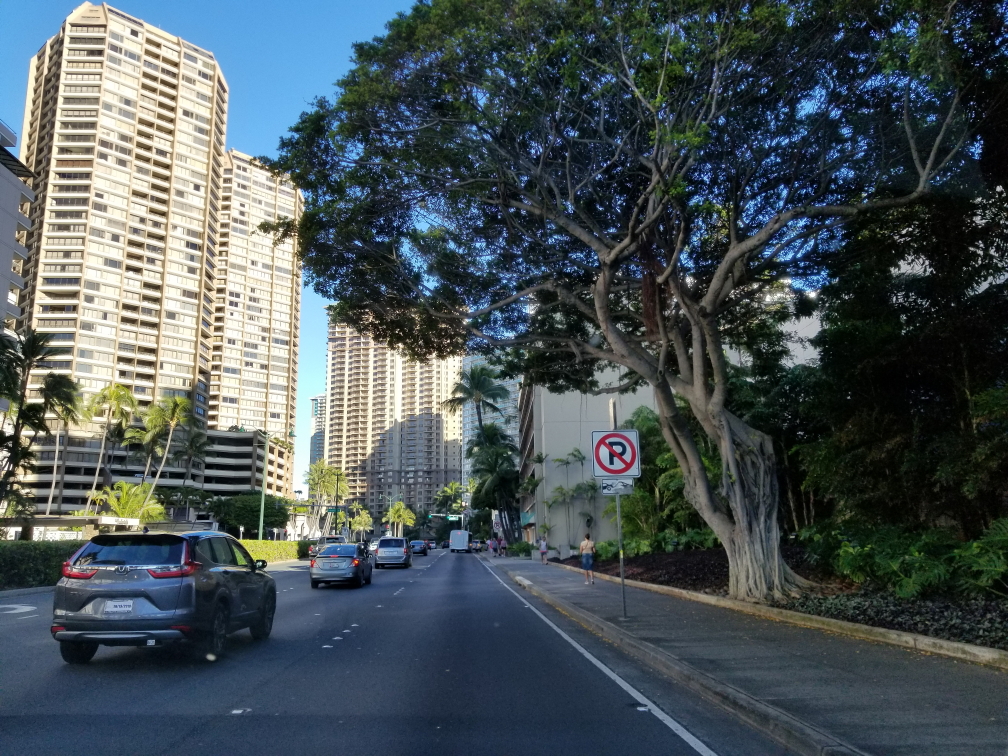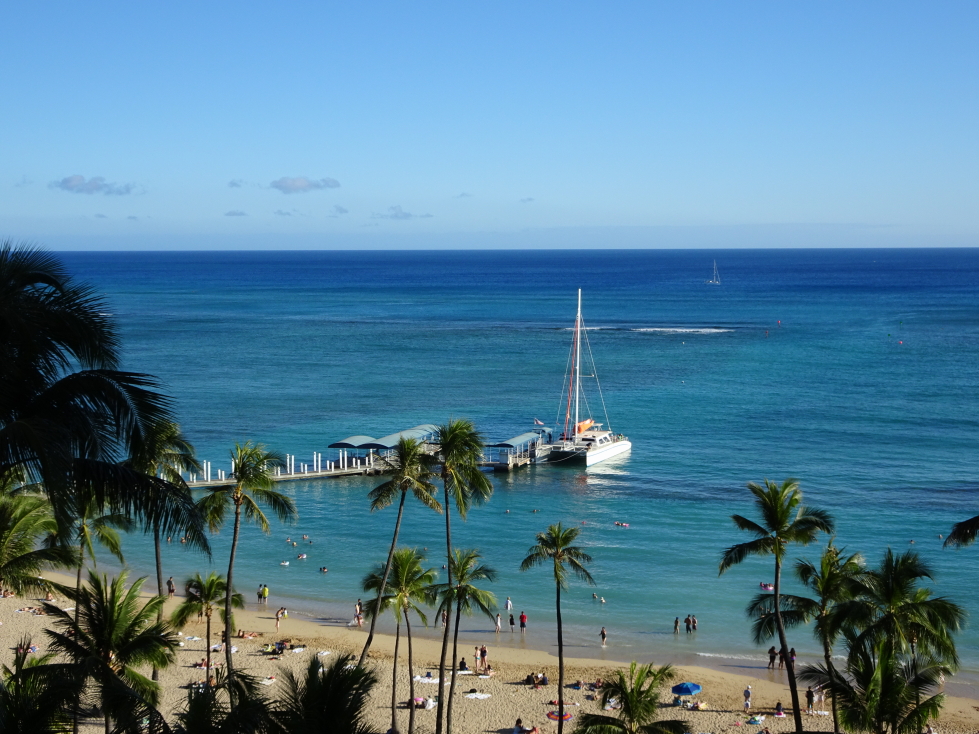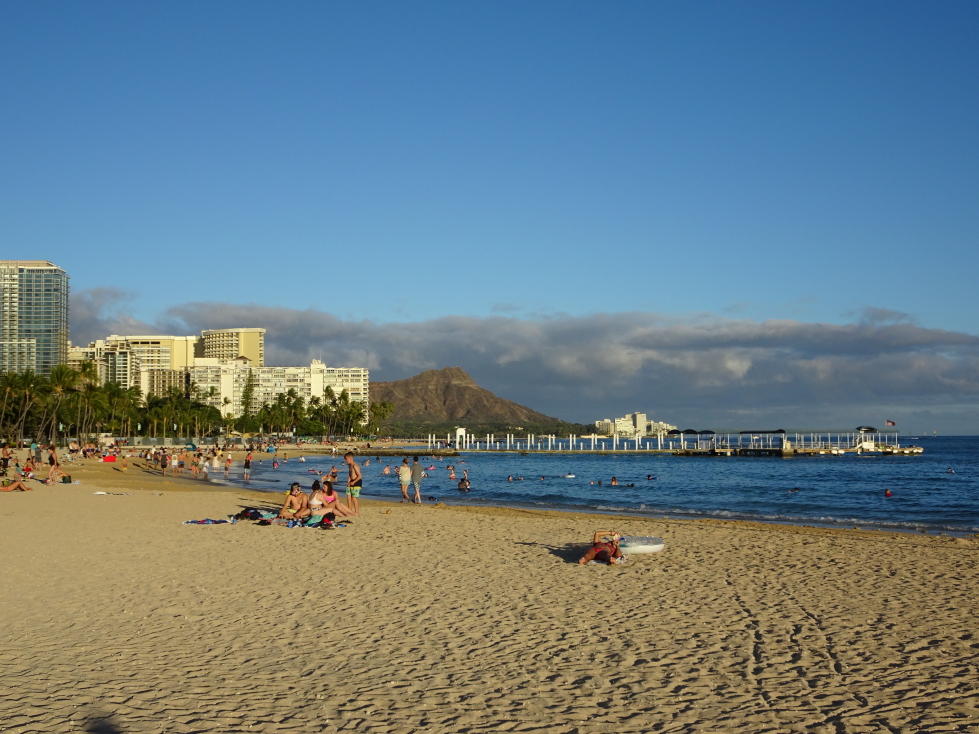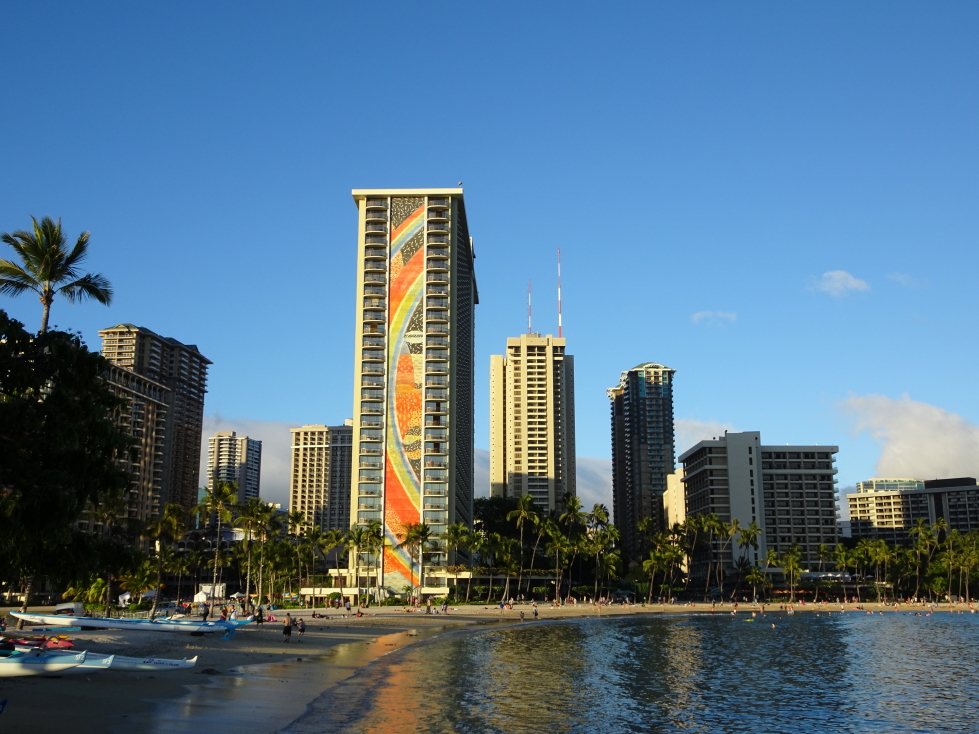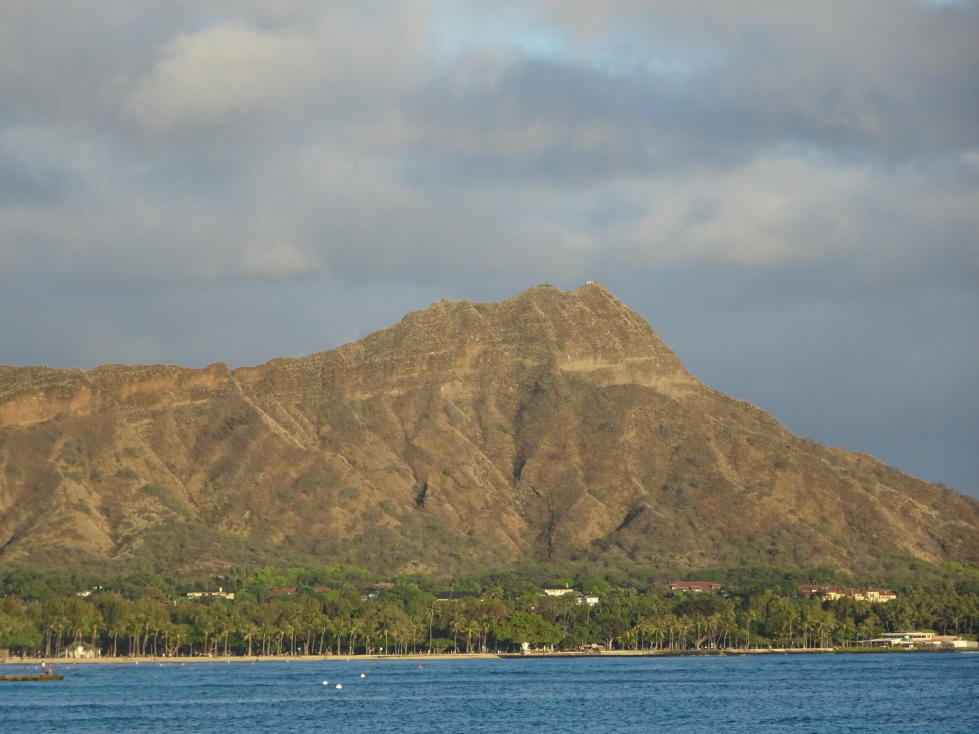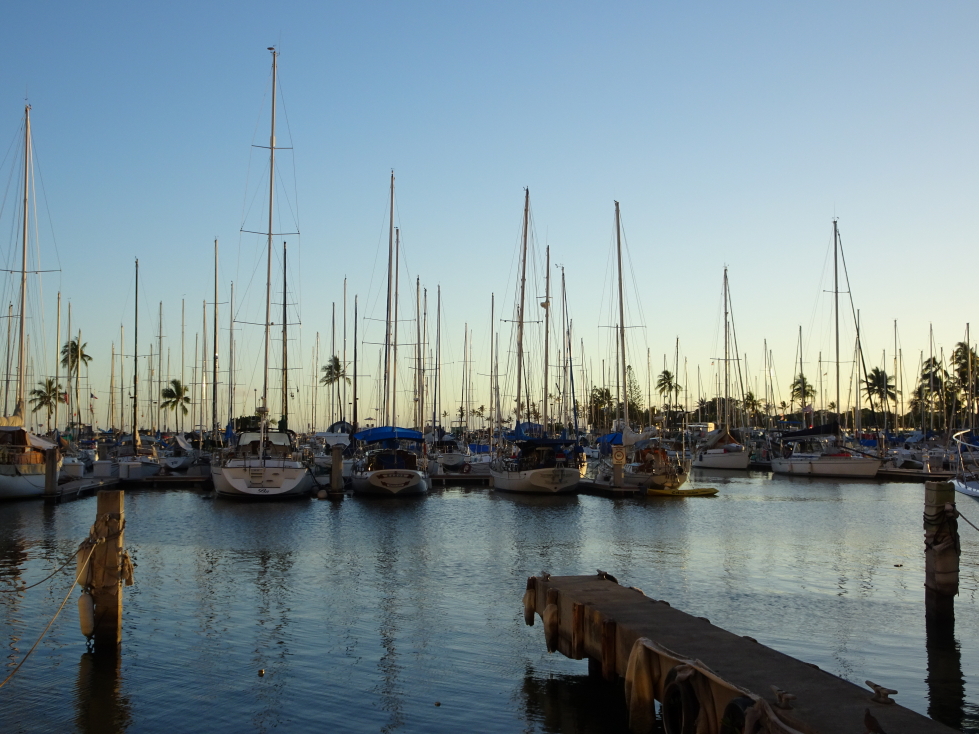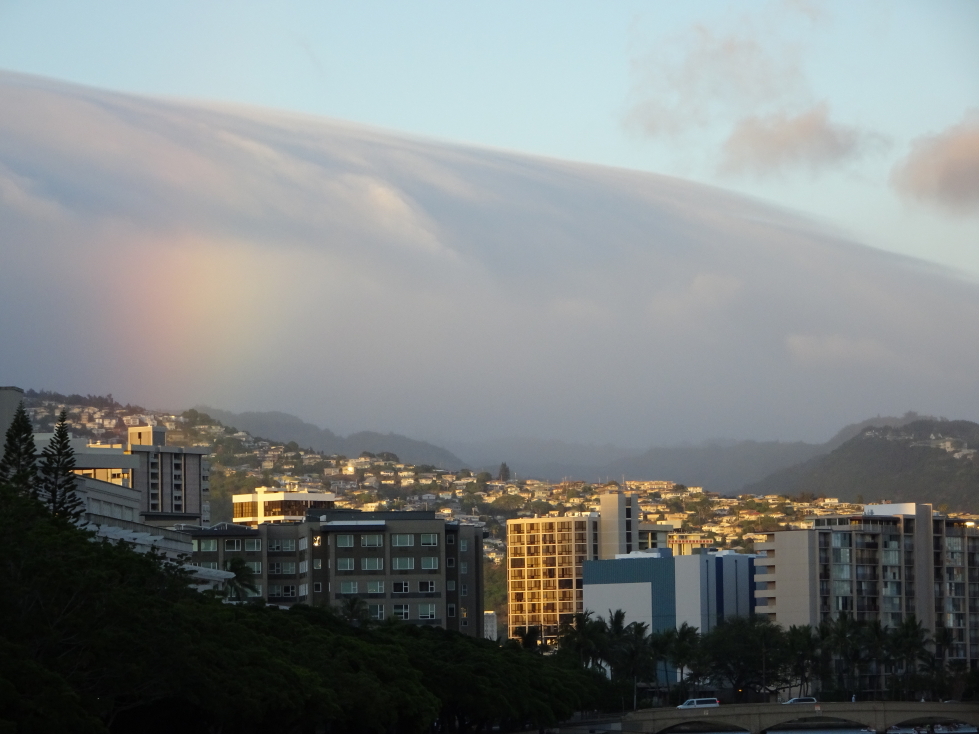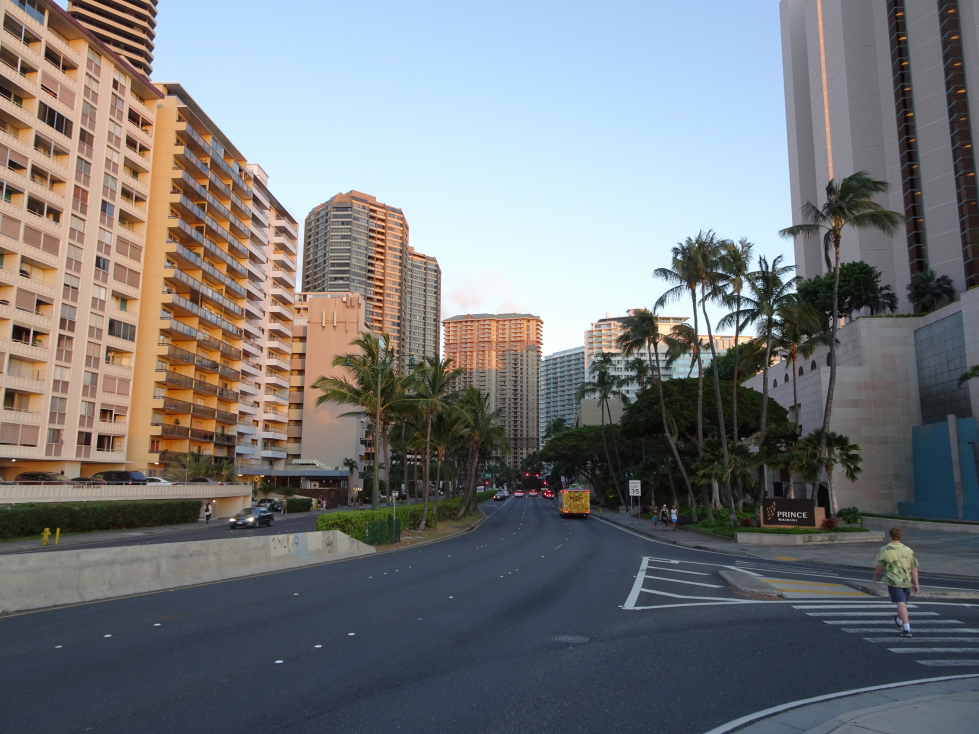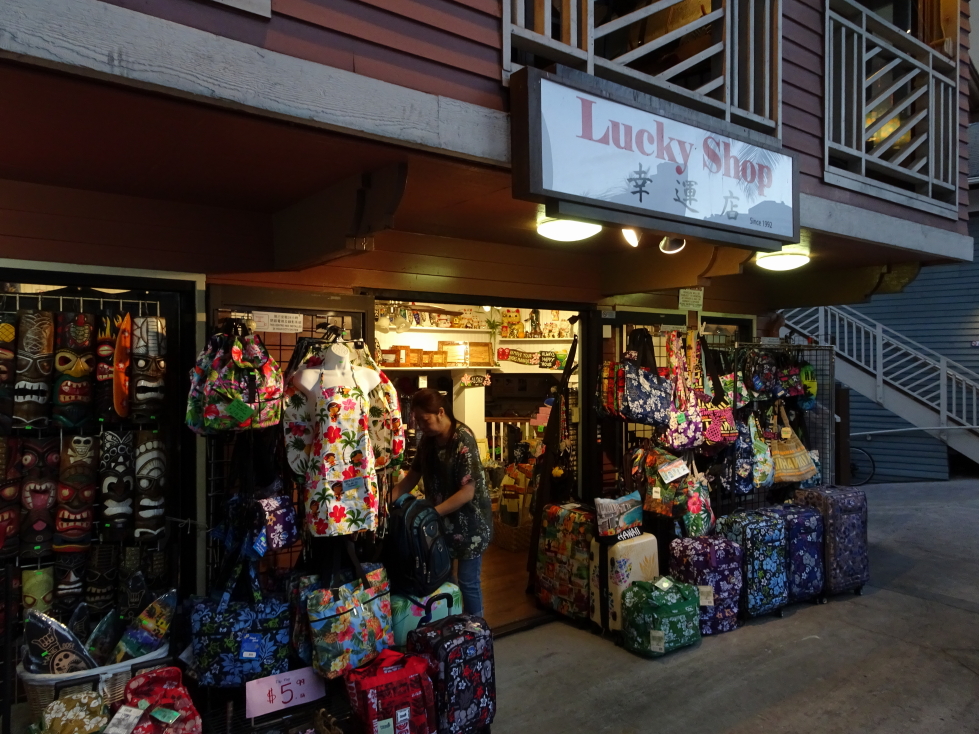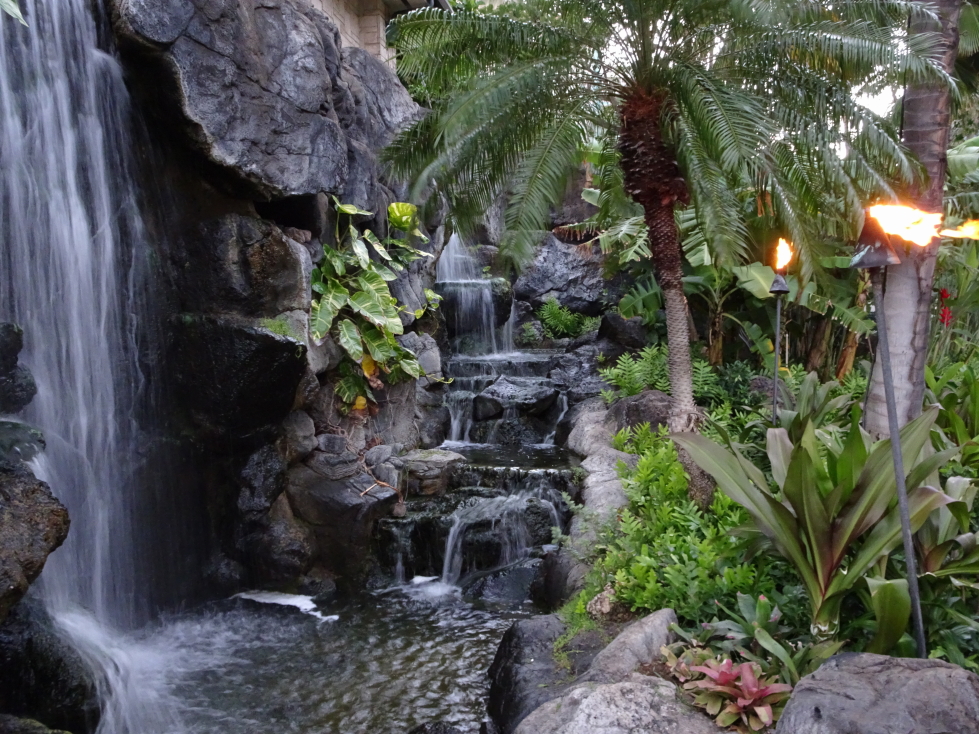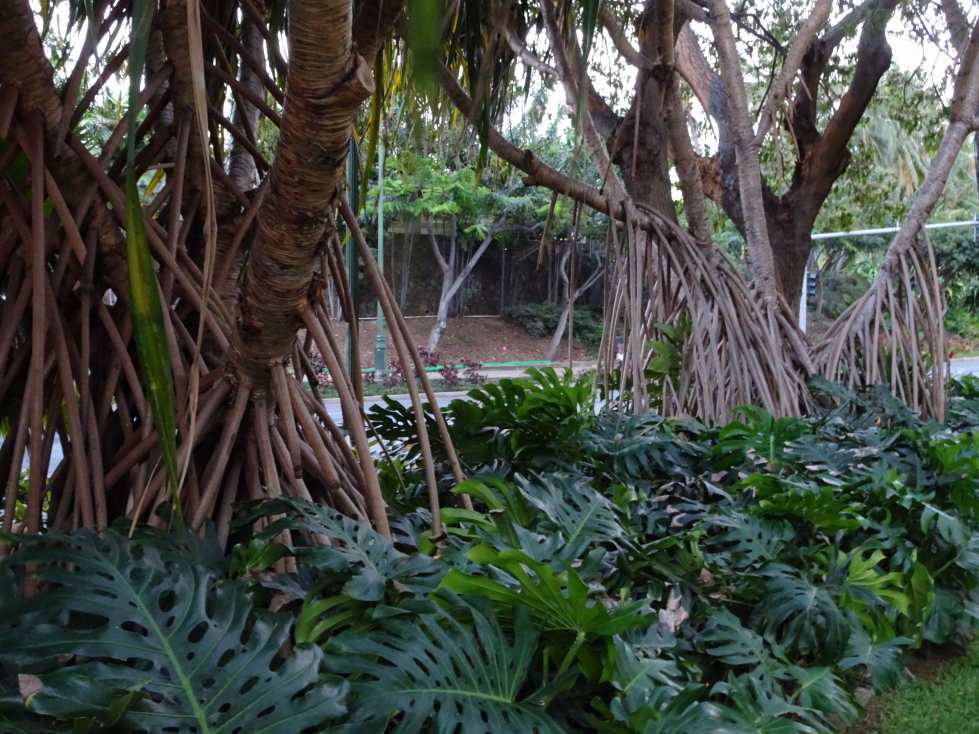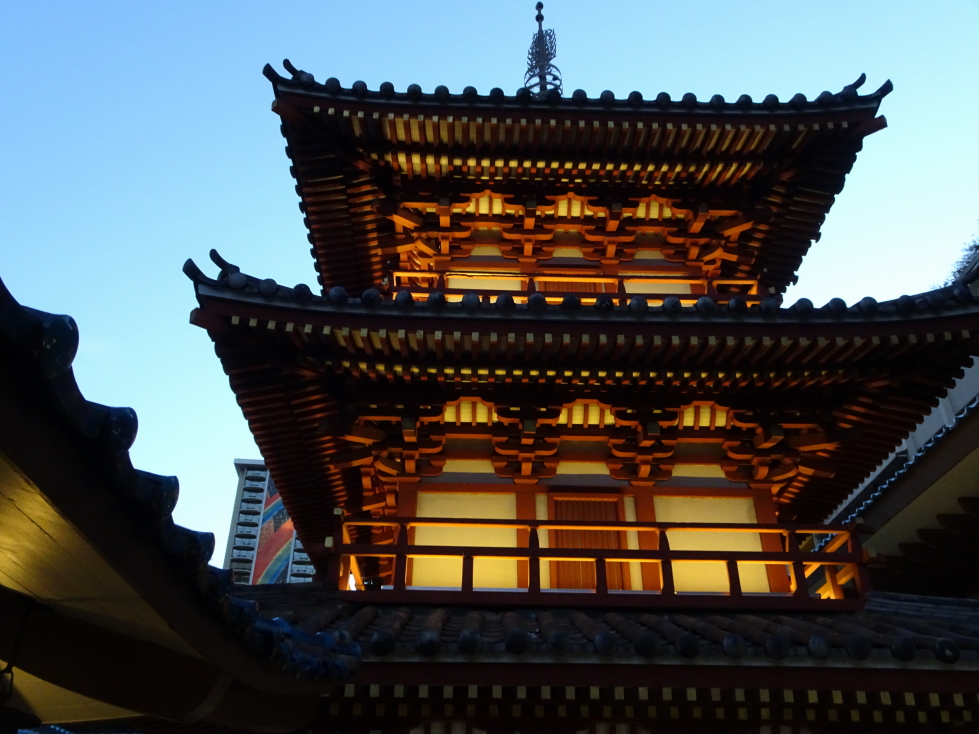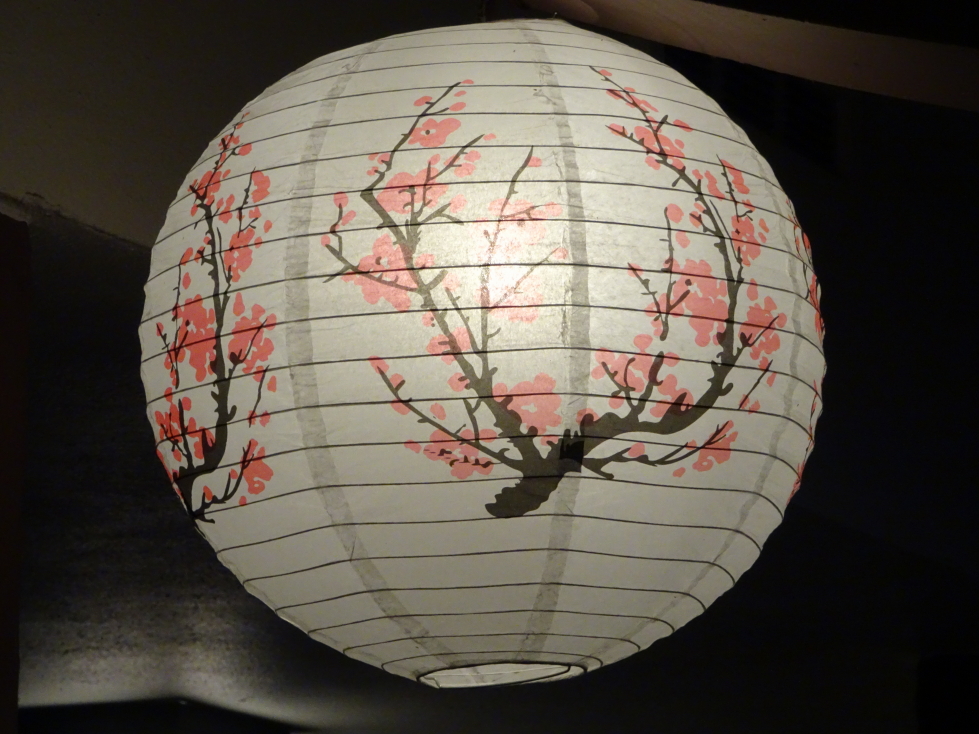I awoke before the dawn (and apparently had just missed Michelle being up with nausea) and tried getting back to sleep without success before getting up and beginning the day. Michelle got up shortly thereafter and all four of us headed down to the Rainbow Lanai for breakfast around 8a. They had two breakfast buffet options, both expensive — a continental one with cereal, fruits, pastries (including chocolate donuts and raspberry croissants, yay!), and some Japanese delicacies. As an aside, Hawaii, and Oahu in particular, sees a large number of visitors from Japan, so much that many signs at the hotel are in English and Japanese and there are tour buses and other services that cater exclusively to Japanese visitors. Additionally, many Hawaiians are of Japanese descent. Thus many restaurants also cater to them. Optionally a hot buffet with eggs, sausage, bacon, “garlic chicken”, monkey bread, and Portuguese not-quite-donut-but-yet-not-quite-beignet called malassadas was available for an additional fee. In addition to the Japanese the Portuguese have a large presence in the state.
We picked up a cab from the main lobby at about 10a. The driver, Rafael, was talkative and friendly and shared knowledge as he drove us from the hotel to Pearl Harbor. He pointed out that the clouds hanging on the mountains that form the spine of Oahu were pretty much stationary and that in Hawaii it rained by zip code, and rarely for a long time except in the winter months when the big storms roll in. He pointed to a school on a ridge overlooking Honolulu that accepted children of a certain percentage Hawaiian blood (falling over time as the population naturally mixes) for a very solid and free education. He joked that he tried blood transfusions for his kids (he himself having a Mexican father and American mother) but it didn’t take. He also mentioned that some of the earliest murals about town were at the airport (like an impressive whale breaching the surface that covered the better part of a building) but their use spread and some sections of town really cultivated them.
We arrived at Pearl Harbor (technically World War II Valor in the Pacific National Monument) just after 10:30a and proceeded to take our cameras and other stuff out of our backpack and checked the backpack. Being an active base security was a bit tighter than normal for a National Monument. We collected our tickets for the 11a tour and, as it was nearly 11a already, passed the museum to stand in line to await entrance to the theater. While we waited a park ranger (monument ranger?) talked about the site a bit.
The video wasn’t very long, at about thirty minutes, but was really well done and informative. It is extraordinary some of the luck — good and bad — that transpired that day. From mistaking the incoming Japanese planes (187 in the first wave) as an incoming delivery of B-17s from the mainland (bad, bad luck) to the US carrier fleet being out to sea delivering planes to other bases (exceptionally good luck). The US commander feared sabotage rather than a surprise attack so had parked the planes together tightly wing tip to wing tip so that they could be protected by patrols easier. Yikes! We learned that though nearly every ship in harbor was sunk that all but three (Arizona, Oklahoma, and Utah) were eventually repaired and put back into service. The Nevada actually almost made it out to sea but, badly damaged, was run aground by its captain to prevent it from sinking in the harbor’s narrow entrance and blocking access for rescue and recovery.
The Arizona was hit by an armor piercing bomb that destroyed its ammunition stores and ripped it apart, its explosion happened to be caught on video. She lost over 1,200 souls that day, the majority still on board the vessel. Oklahoma lost over 400. Today only five USS Arizona survivors remain and, like those before them, they can request to be buried on the ship. They are first cremated and Navy divers swim out on their backs, urn held above water, while full military honors including a 21 gun salute are performed. The urn is then placed in one of the turrets (#4 if I recall). Also each year on December 7th all of the victims of the attack are listed on slips of paper and visitors honor the victim in a solemn ceremony.
While the attack (both the first wave and the latter second wave) was a success with the US battleship fleet destroyed along with many planes at a cost of only 24 planes and 5 midget submarines it had crucially failed to get the carrier fleet (which would be the deciding factor just seven months later at the Battle of Midway in June 1942). Perhaps more importantly, it had the opposite effect on US morale than the Japanese expected. Rather than defeating America’s fighting spirit it galvanized support for the war and in many ways was the birth of the modern United States.
Once the movie was done we walked out to the docks and boarded a fairly small vessel. Addison and I sat in the starboard bow and Genetta and Michelle the port bow. Near us sat a park ranger who would narrate the tour and two Navy sailors that piloted the boat. As the docks at the USS Arizona were being repaired we were not able to go on to the iconic memorial that spans (but does not touch!) the wreck. The harbor tour, however, was a nice consolation prize. In addition to going by the USS Arizona we sailed past the USS Missouri (where the Japanese surrendered in Tokyo Bay in 1945) as well as some (I think) active Marine vessels parked at the adjacent shipyard. He mentioned that in addition to the other victims of the USS Utah there were the remains of a little girl who died in 1937, the daughter of a sailor who had her ashes on board for a burial at sea that sadly never happened due to the attack.
On return to the dock we visited several nice memorials made of stone and nicely manicured lawn. There was one to all of the victims of the attack as well as one listing each submarine lost during WW2 as well as their crew, listed as being “on eternal patrol”. Michelle was wearing her USS Tang shirt (the USS Tang being an interactive submarine exhibit in New Orleans’ National WW2 Museum) and we found its memorial.

Memorial for the USS Tang, the submarine featured at the National World War II Museum in New Orleans
About 12:30p we boarded a motor coach for a quick ride over a bridge to Ford Island, a large island in the middle of Pearl Harbor. I chatted with a guy from Washington state for a bit along the way. The coach first stopped at the USS Missouri but we had decided to skip that (as we’ve toured the USS North Carolina a couple of times) in favor of the Pacific Aviation Museum. The museum was located next to the iconic control tower seen in movies such as “Tora! Tora! Tora!” in two large hangars, 37 and 79 — both of which survived the attack on Pearl Harbor.
We entered, purchased admission, then went to the adjacent Laniakea Cafe for lunch. I had an excellent (if a tad salty) kalua pork sandwich while Michelle had chicken tenders and Genetta a grilled cheese. Addison had a burger (which he said was “OK”) and garlic fries that he found much too garlic-y.
After lunch we watched a slide show about the museum and its artifacts narrated by a docent. Stepping through the exit doors of the auditorium and into the main part of the hangar we were greeted by a Japanese “Zero” (actually a Mitsubishi A6M) restored to look like the Zero piloted by a Japanese pilot that had to crash land his plane on the Hawaiian island of Ni’ihau during the attack.
It wasn’t his actual plane that was restored, however. That is because the wreckage of that plane was on display nearby as it appeared shortly after US government agents were done picking apart the plane. Early in the war the Zero was one of the most impressive fighters due to its speed and maneuverability but American aviation experts hadn’t pieced together how the Japanese pulled it off. Being able to scavenge the wreck proved to be a great boon. Not only was the wreck fascinating but also the circumstances of the landing on Ni’ihau. In 1924 a military strategist posited that Ni’ihau would be a perfect launching place for a Japanese attack on Pearl Harbor as it was quite flat and close enough to reach Oahu. Note that carriers weren’t really a thing at that time, so a land-based airfield would be needed. The government heeded his warnings and bought the land, plowing thousands of furrows in the flat portions of the island (the tractor used was even on display in the museum!) to make its use as an airfield impossible — and also prevented the injured Zero from landing intact.
Hanging above the wreckage was a reddish civilian plane flown by a father with his son on the morning of the attack. The incoming first wave of Japanese fighters spotted the plane and fired upon it, forcing it to land at the adjacent civilian airport (now the main Honolulu airport). One of two remaining Nakajima B5N “Kate” dive bombers was also on display — only part of the fuselage and wings and landing gear exist today — and this one was the more intact of the two! Shame that has been lost to history. Other craft on display was the trainer that George H. W. Bush flew, a Douglas SBD Dauntless dive bomber (nicknamed “Slow But Deadly”), a Grumman F4F Wildcat, a Curtiss P-40 Warhawk painted in Flying Tiger regalia, and a B-24 Liberator bomber. Today, as when I was a child, I’m astounded at the bravery of the gunners of the B-24, particularly the entirely exposed nose. Rounding out hangar 37 were some simulators that we took a pass on in the interest of time.
We walked the short (but very hot, especially as we were on the tarmac!) distance to hangar 79 where more planes were on display, including a Republic of Korea (ROK) fighter from the Korean War and a slew of helicopters outside the hangar. The hangar itself still bore damage from the attack, including bullet holes in the hangar’s glass panes.
Unlike hangar 37’s planes the ones in 79 weren’t WW2 but rather Cold War and beyond. They also weren’t individually displayed with painted backdrops nor placed upon faux carrier decking and the like. Still really impressive, they had many of the more recent fighters such as the McDonnell Douglas F-4 Phantom, Grumman F-14 Tomcat, McDonnell Douglas F-15 Eagle, and General Dynamics F-16 Fighting Falcon. There was also a pair of Korean War jets, the Soviet MiG-15 as well as its foil, the North American F-86 Sabre.
The hangar was also a restoration workshop and they were currently in the process of restoring a B-17 that crashed in Guadalcanal. The pilot thought he was landing in a field but quickly discovered it to be a shallow swamp. It was a hard landing, bending all of the props, rendering the aircraft not flight-worthy. He destroyed the top secret bomb sight then trekked for six weeks through the jungle before getting to a friendly base. On subsequent missions he and other pilots would often see the wreckage lying in the swampy jungle below but the US could never recover it. Years of weather and scavengers took their toll but it was finally recovered in the 2000s by cutting it into pieces and airlifting the pieces out to a local airfield. There the pieces sat for weeks while the government of Papua New Guinea decided whether to allow export to the United States. Luckily for us, they did. It is now dubbed “The Swamp Ghost” and modern Disney artists designed really neat bomber art for it. I didn’t know this, but one of the many civilian contributions of WW2 was Disney had their artists designing much of the bomber and squadron art for the US military. Really neat (and explains the incredible quality of much of that art)!
We headed to the gift shop where we got some magnets and post cards and Addison bought a hat. He wanted a hoodie with the Swamp Ghost design but he preferred the old version (tan rather than blue, really showing off the art better) and that didn’t come in a size he wanted. Oh well. Back on the coach for the ride off of Ford Island we learned about Red Hill Underground Fuel Storage Facility, completed in 1943 but not known to the general public until the mid-1990s. The top secret facility, still in use today, consists of 20 12.5 million fuel storage tanks (250′ high by 100′ in diameter) encased in concrete mined into the volcanic rock of Red Hill. Gravity-fed 2.5 mile long tunnels connected the tanks to fuel terminals for ships at the Naval base in Pearl Harbor.
A new museum covering submarines is coming in 2020, sadly too late for us on this trip. Did get a sweet Hawaii magnet with both the map and flag on it, though. We went through the two small buildings we skipped on the way to the theater earlier in the day. Inside were interesting exhibits on how the war affected Hawaiians — the threat of invasion was very real, blackouts strictly enforced, martial law declared, etc. — as well as the second generation Americans of Japanese ancestry Nisei regiment that distinguished itself in action in Italy, also known as the Purple Heart Battalion.
We texted our taxi driver from earlier, Rafael, about 4p. He finally showed up about 4:45p (Honolulu traffic is terrible) and, as traffic was heavy, opted to take us via US-92 rather than H1 (Hawaii’s interstate except, of course, intrastate). We talked about his parents, moving to Hawaii in 1974, and the light rail system that is coming thirty years too late — built to ferry people from a town to the west into Honolulu. Seems cheap housing was used to lure people to the new town with the expectation that jobs would follow — they never did. He also said that for many Japanese Hawaii was a great destination — close and safe and they knew they’d be taken care of. With China’s rise many Hawaiians figured that they’d be able to attract that tourism in the same way but it turned out that many of the things Chinese tourists valued weren’t the same. Also, many Hawaiians retire to Las Vegas (a later tour guide would refer to it as the ninth Hawaiian island) due to cost of living being so high in Hawaii.
We arrived back at the room shortly after 5p. Addison and I walked to the west past the Duke Kahanamoku Lagoon and the marina and across the canal that separates Honolulu from Waikiki to Ala Moana Regional Park situated across from the mall. As we crossed over the canal and looked toward the inland mountains we saw a bit of a rainbow. As it was getting dark we headed back to the resort. We stopped by the ABC Store (in Hawaii that is a very, very common convenience store and NOT Alcoholic Beverage Control!) for a six-pack of bottled water as well as a solar-powered hula dancer figure at a nearby souvenir store.
Exiting the store we saw Michelle and Genetta returning from a little bit of shopping then headed as a group to Round Table Pizza for dinner. Michelle had a spinach and pineapple pizza while Genetta and I shared a medium garbage pizza that wasn’t bad. For appetizer we had garlic bread and it was OK, nothing Earth shattering. Addison and Michelle went back to the room while Genetta and I had some ice cream from Lappert’s Hawaii, a fairly ubiquitous ice cream shop. I had two scoops of Kona Coffee in a styrocone or (as the rest of the world calls it) a cake cone. Genetta looked up styrocone as she was convinced it was a Brian-ism (and to be fair, it is…) but at least one other crazy person out there calls it the same thing. Thank you Internet!
As soon as we got back to the room there was the boom boom boom of fireworks so Genetta and I quickly turned around to try and catch them. We arrived in time to see the finale and that’s it. Bummer. Headed back to the room and to bed around 11p as we were still quite tired from the trip over.
